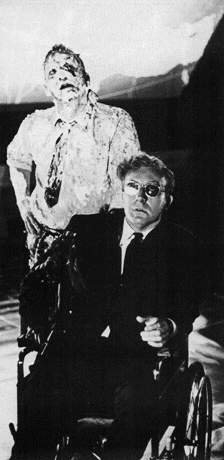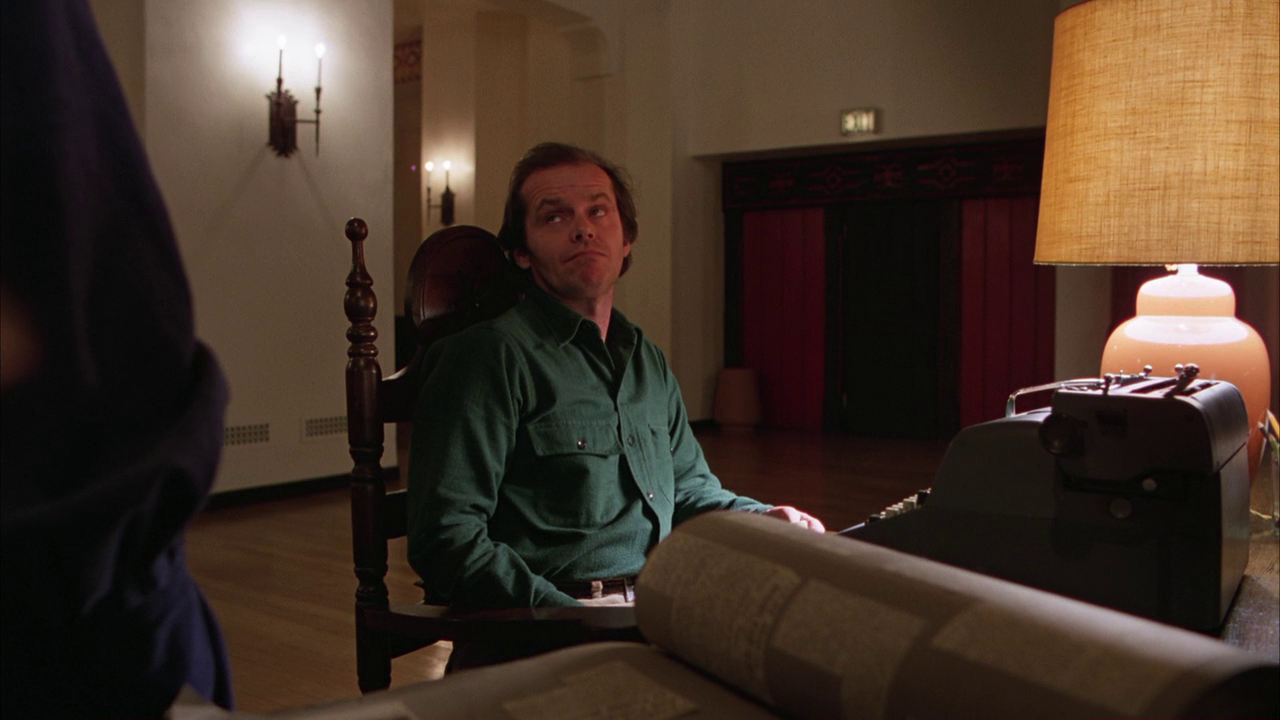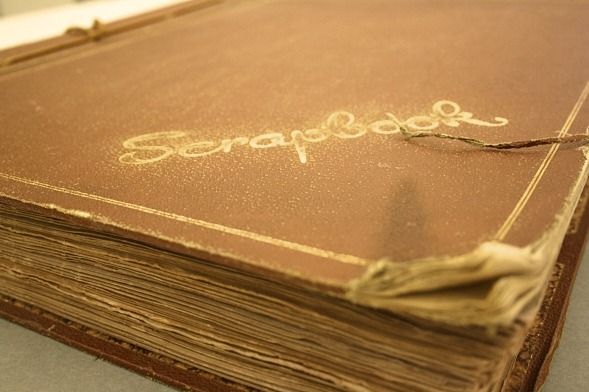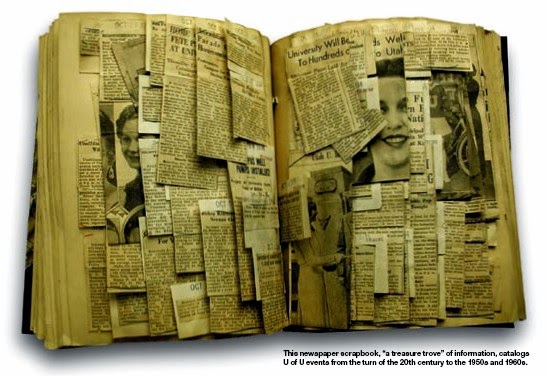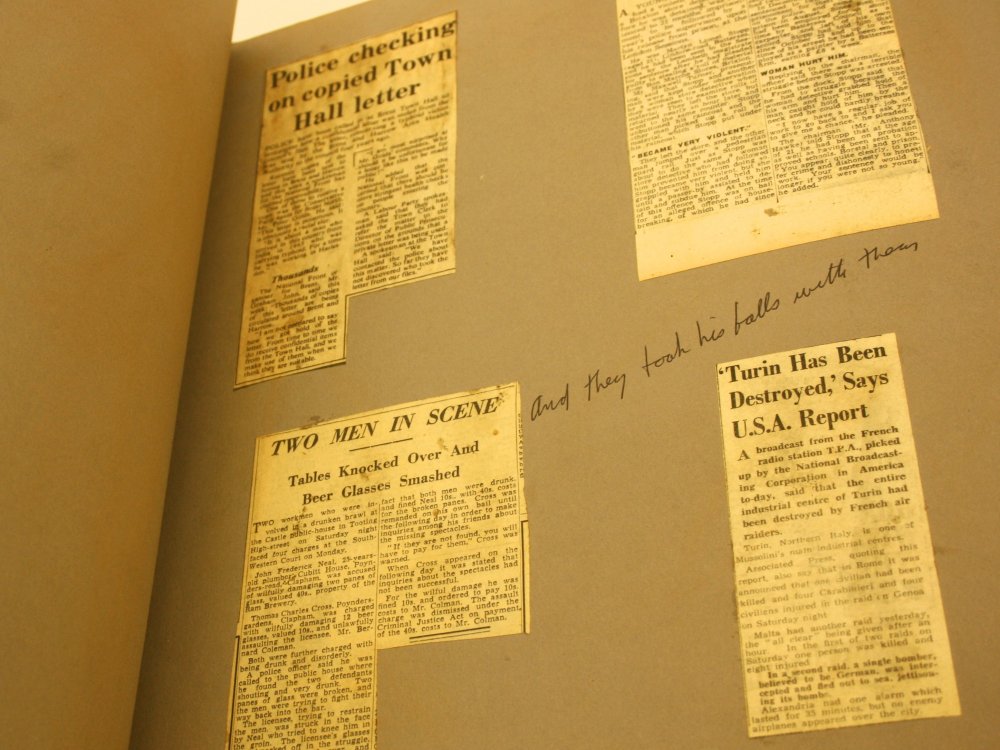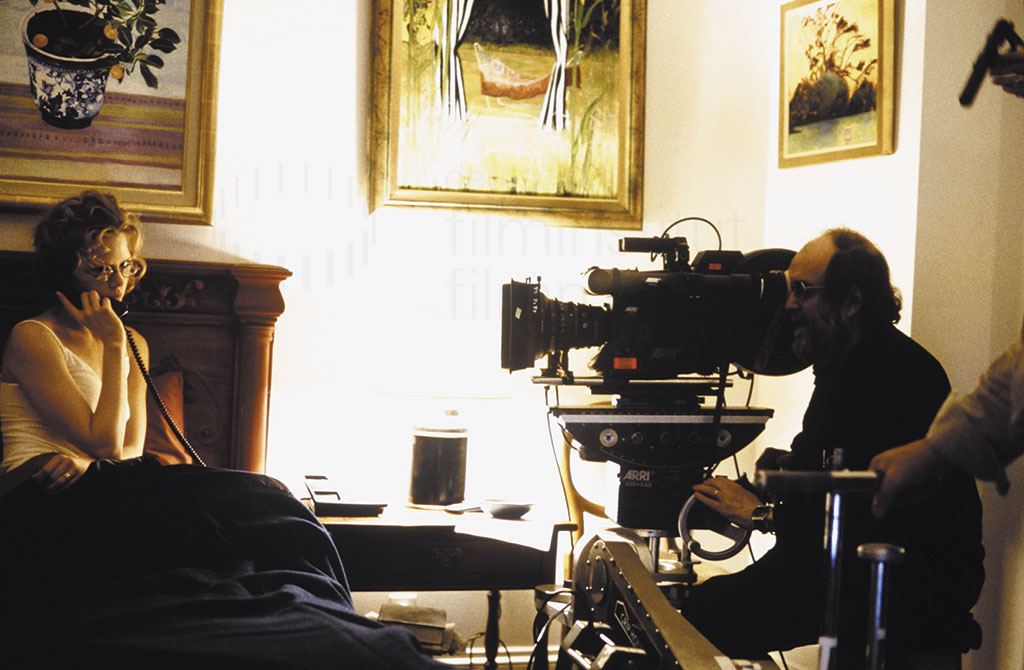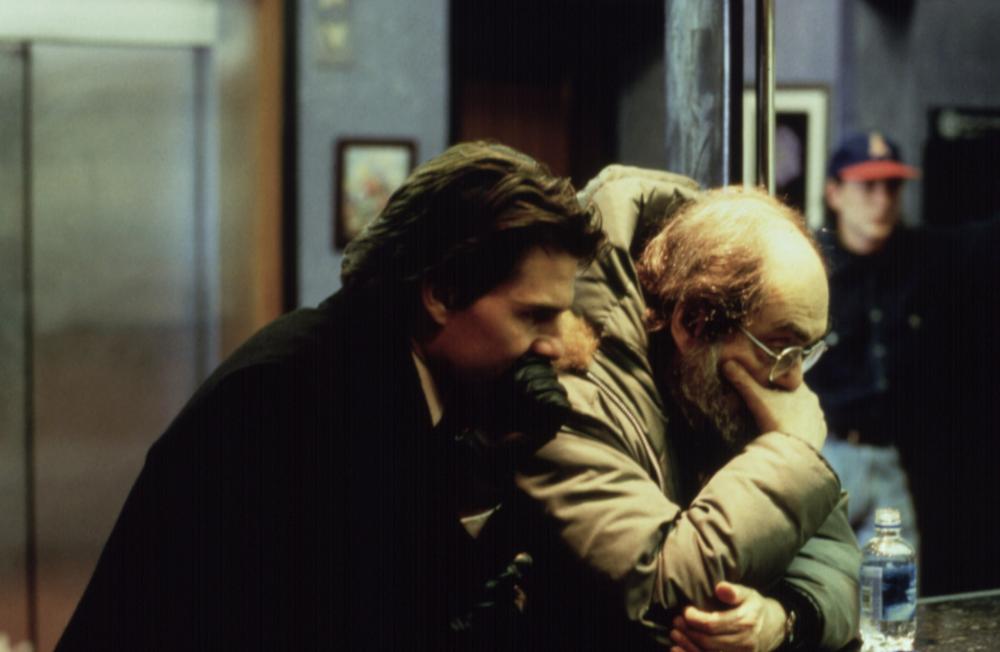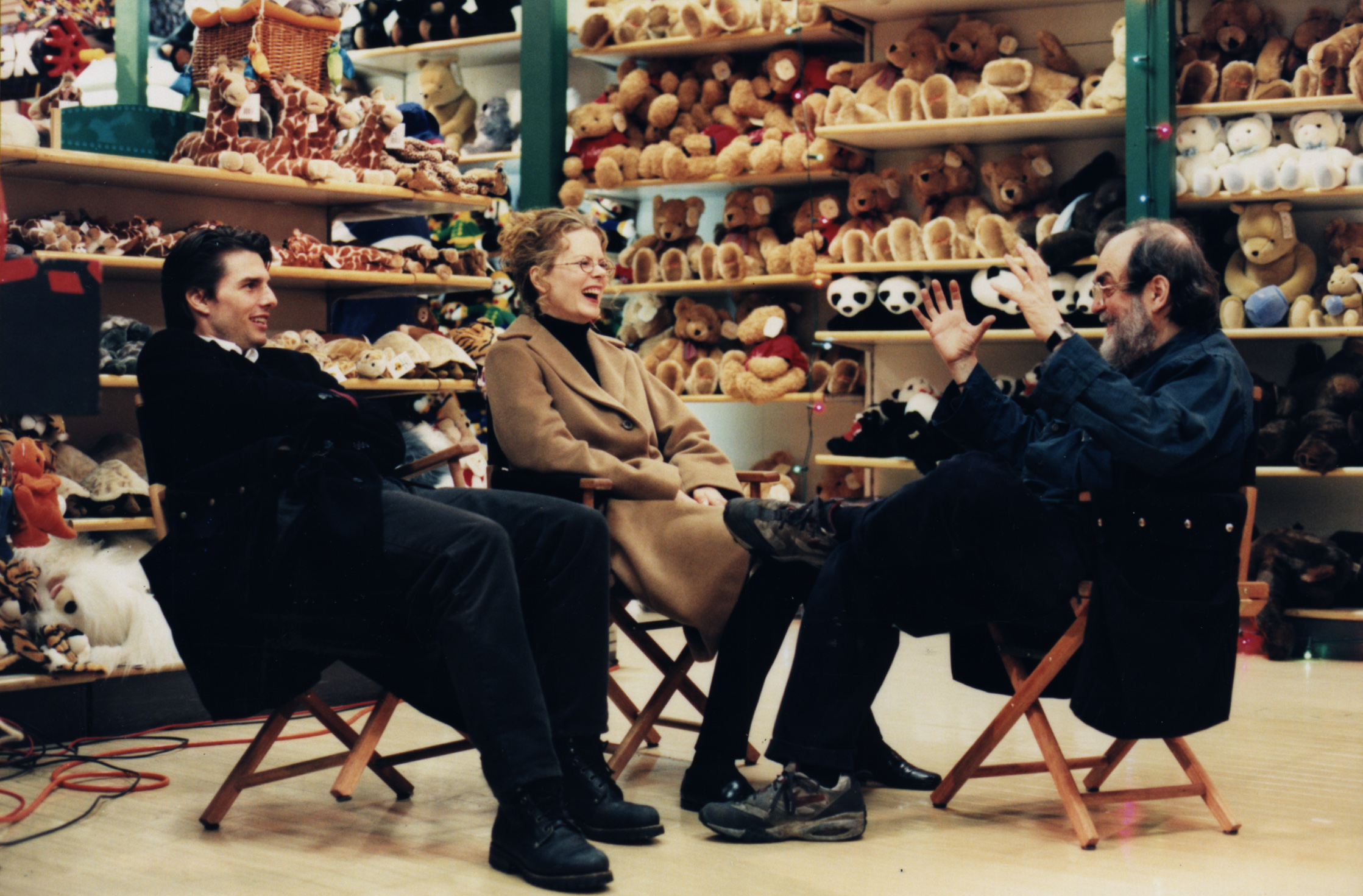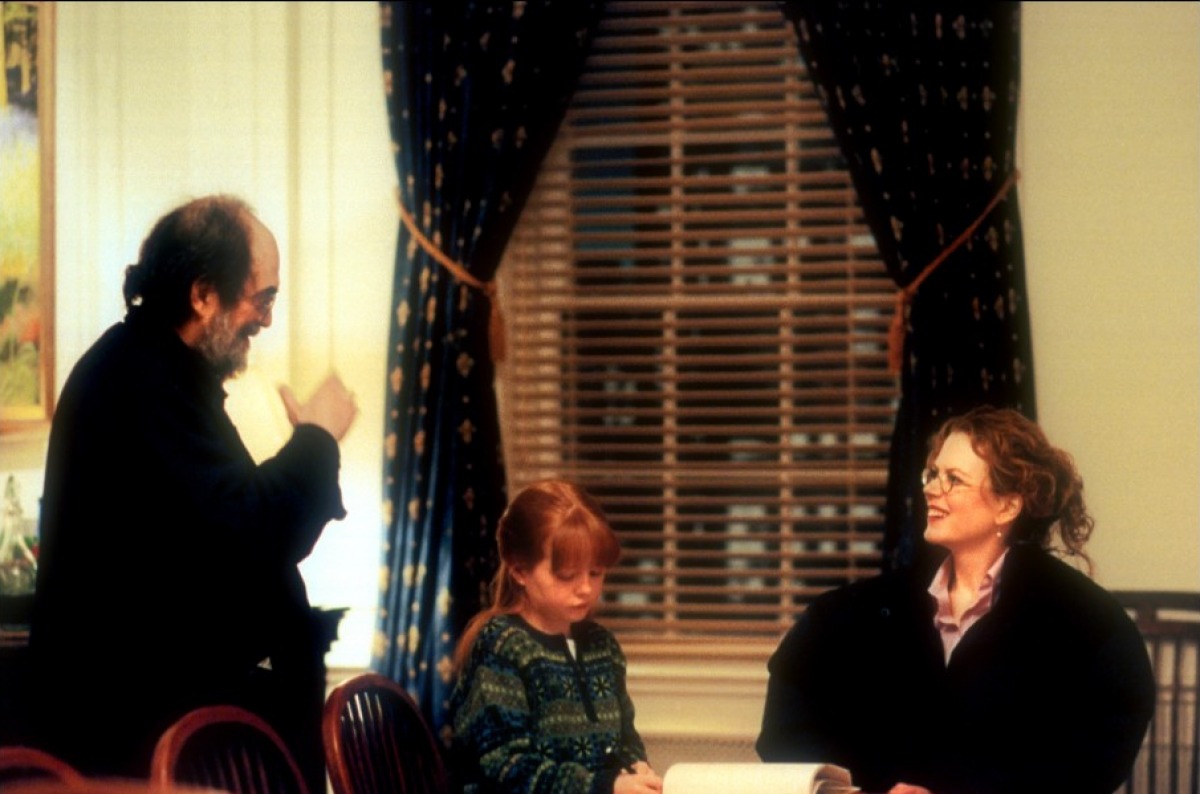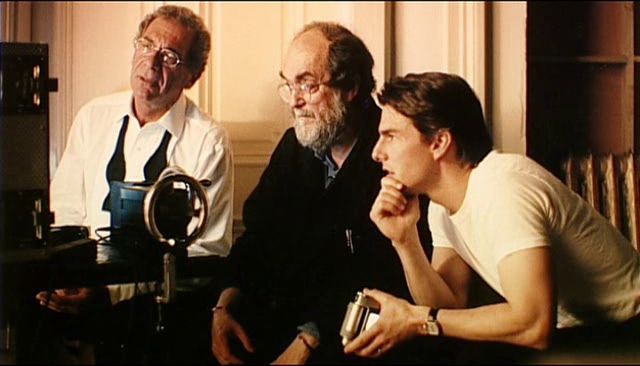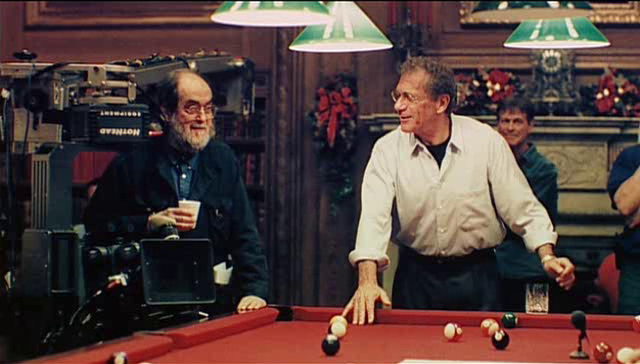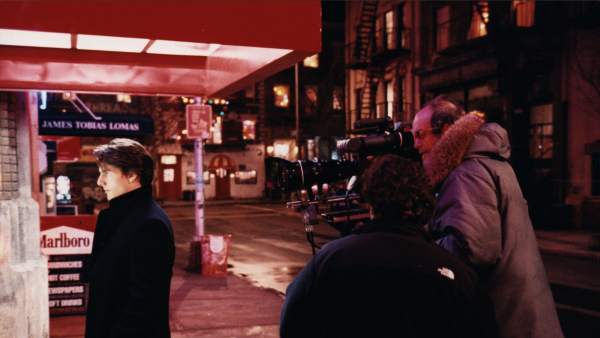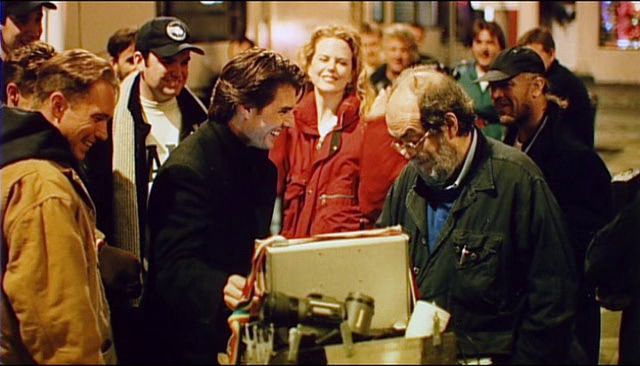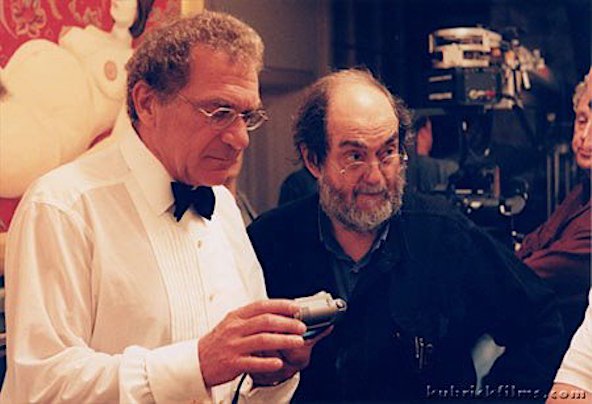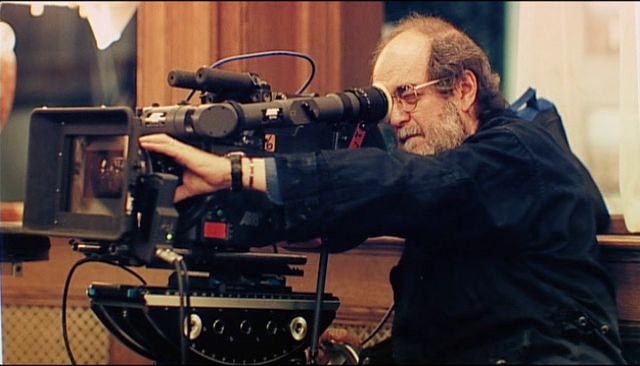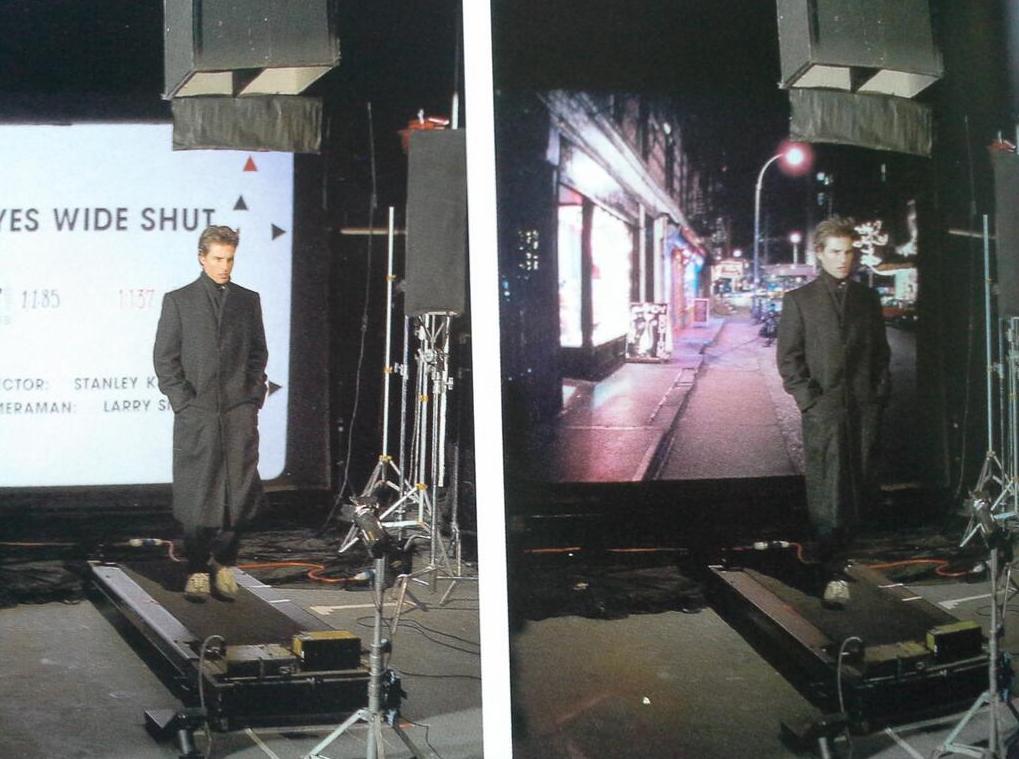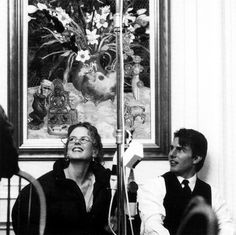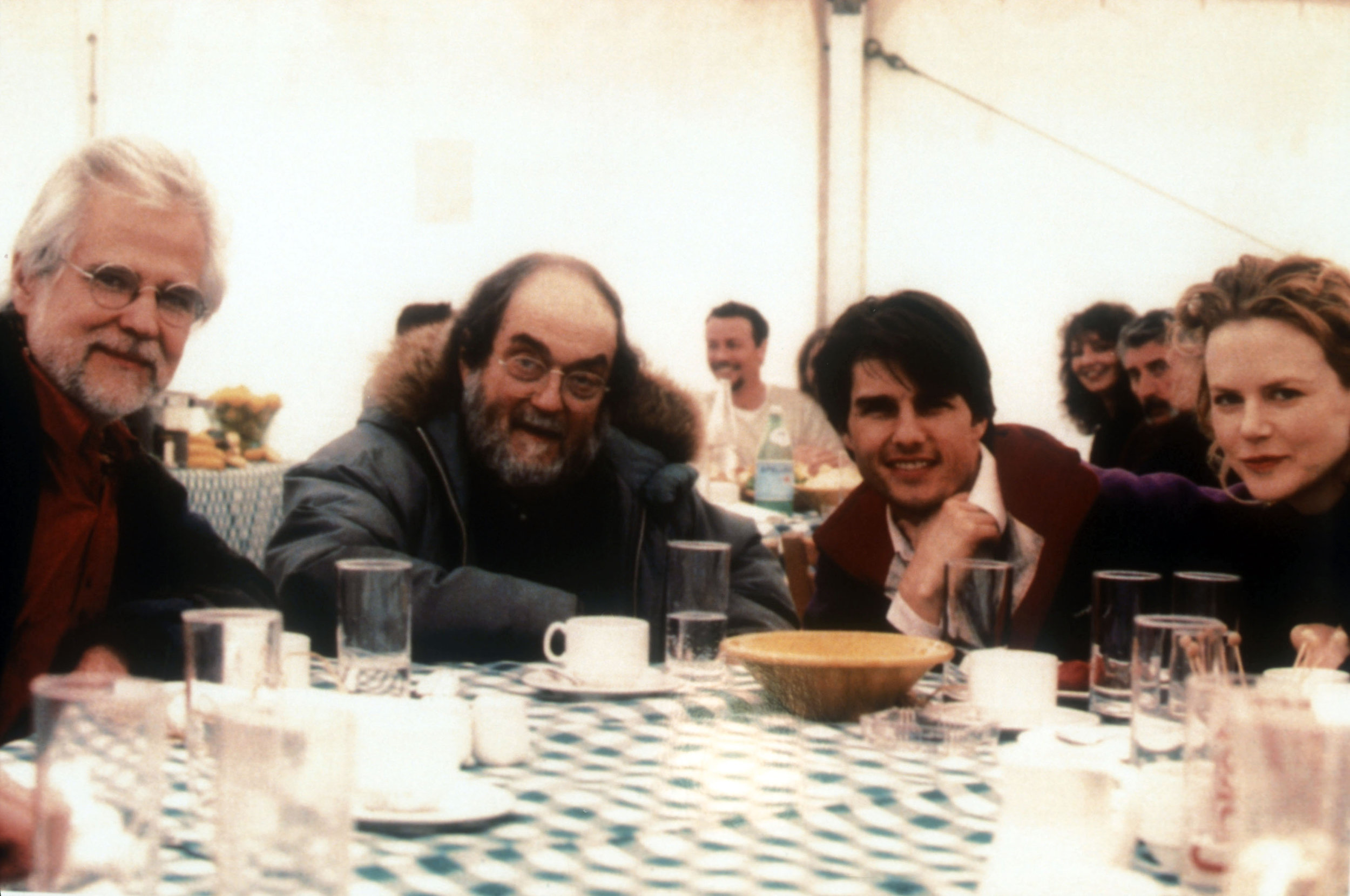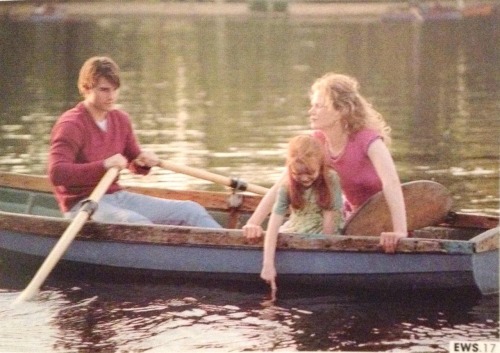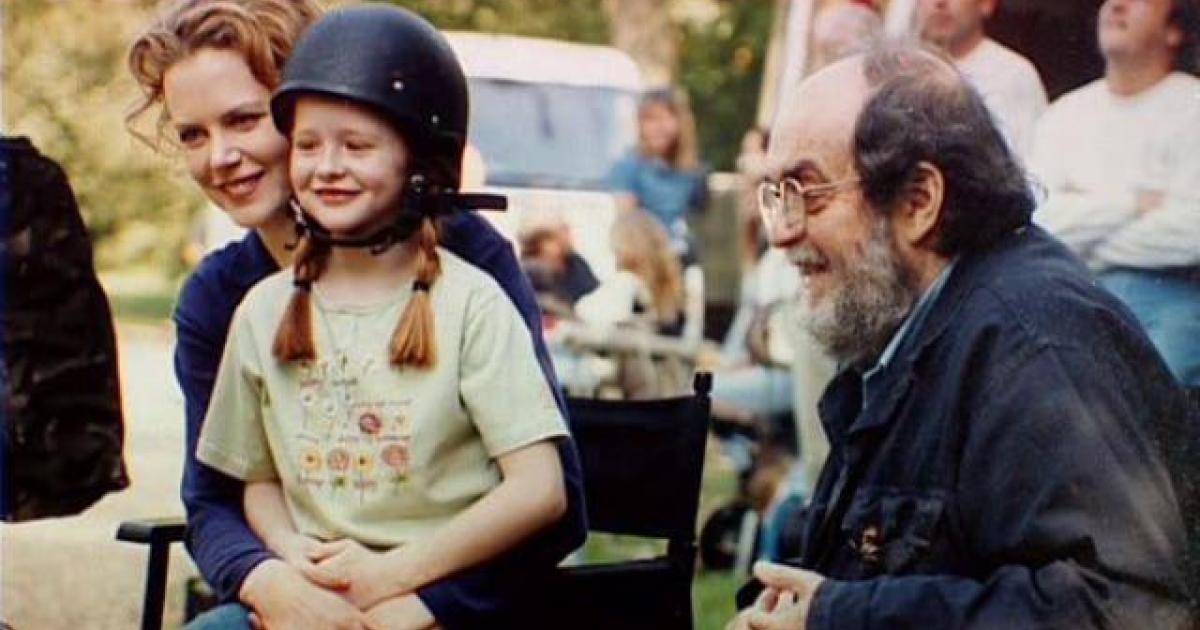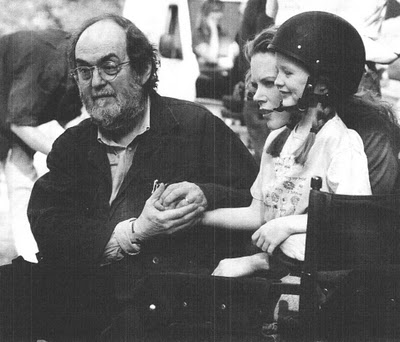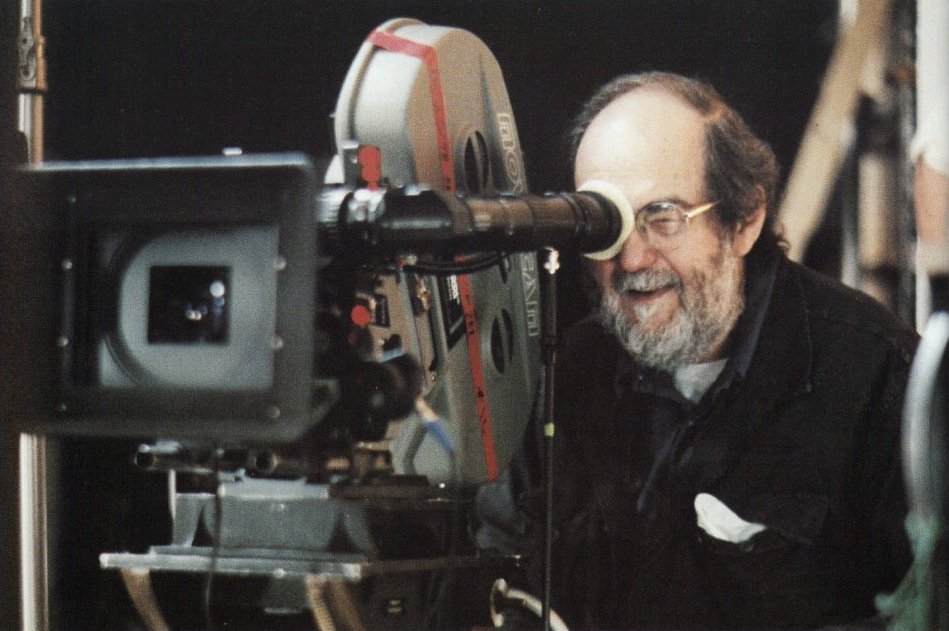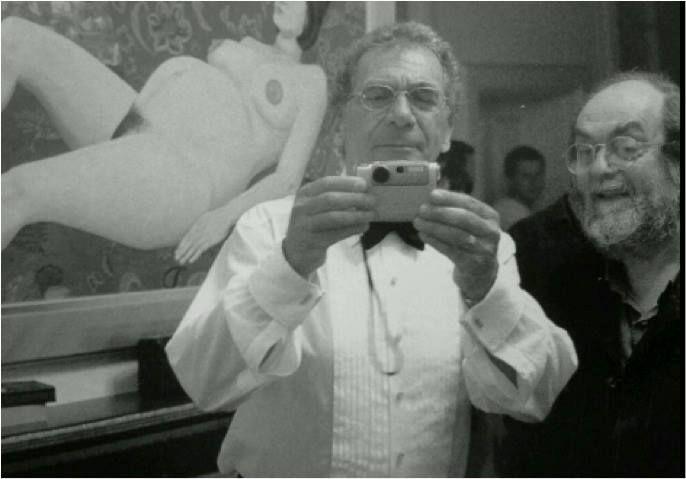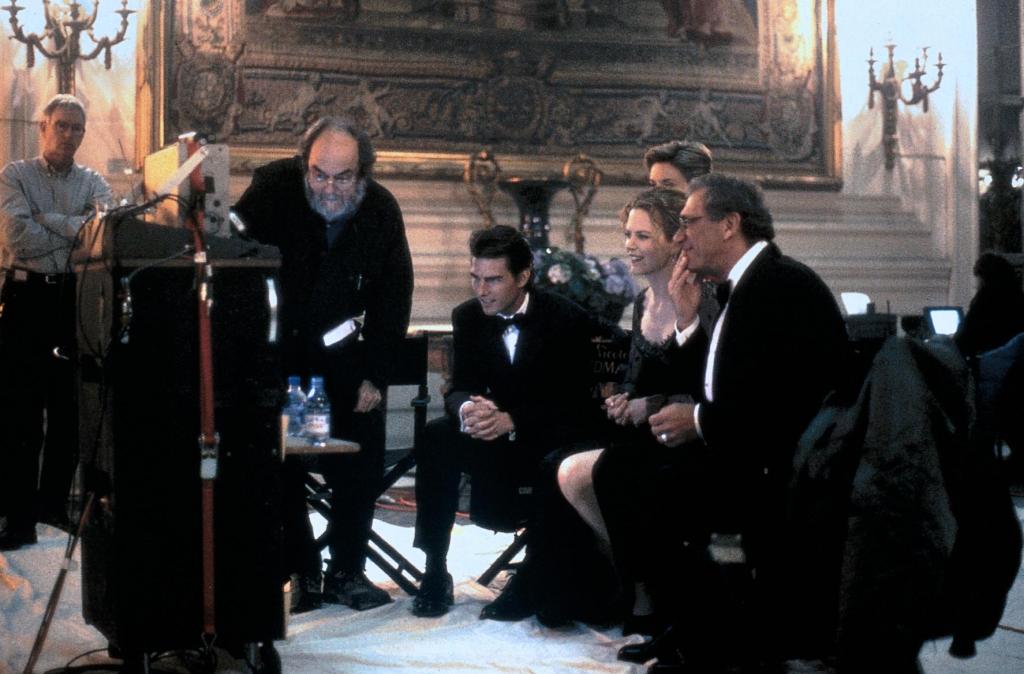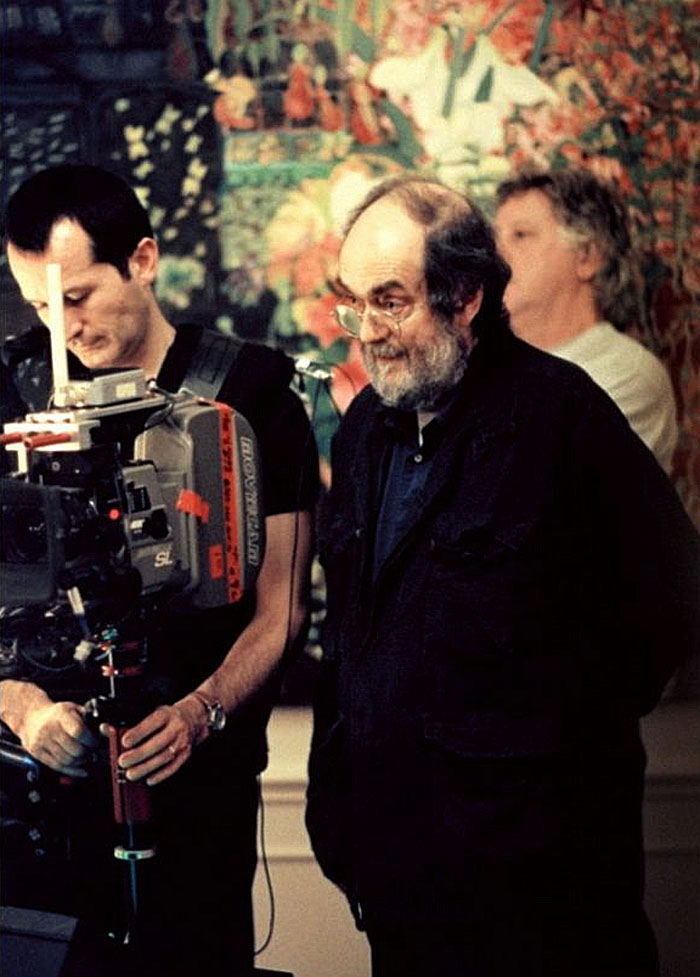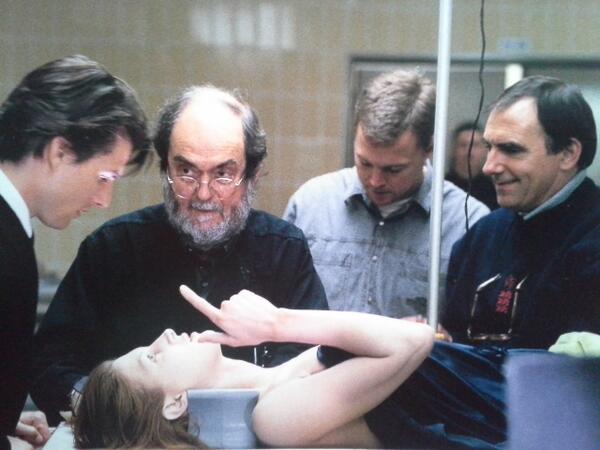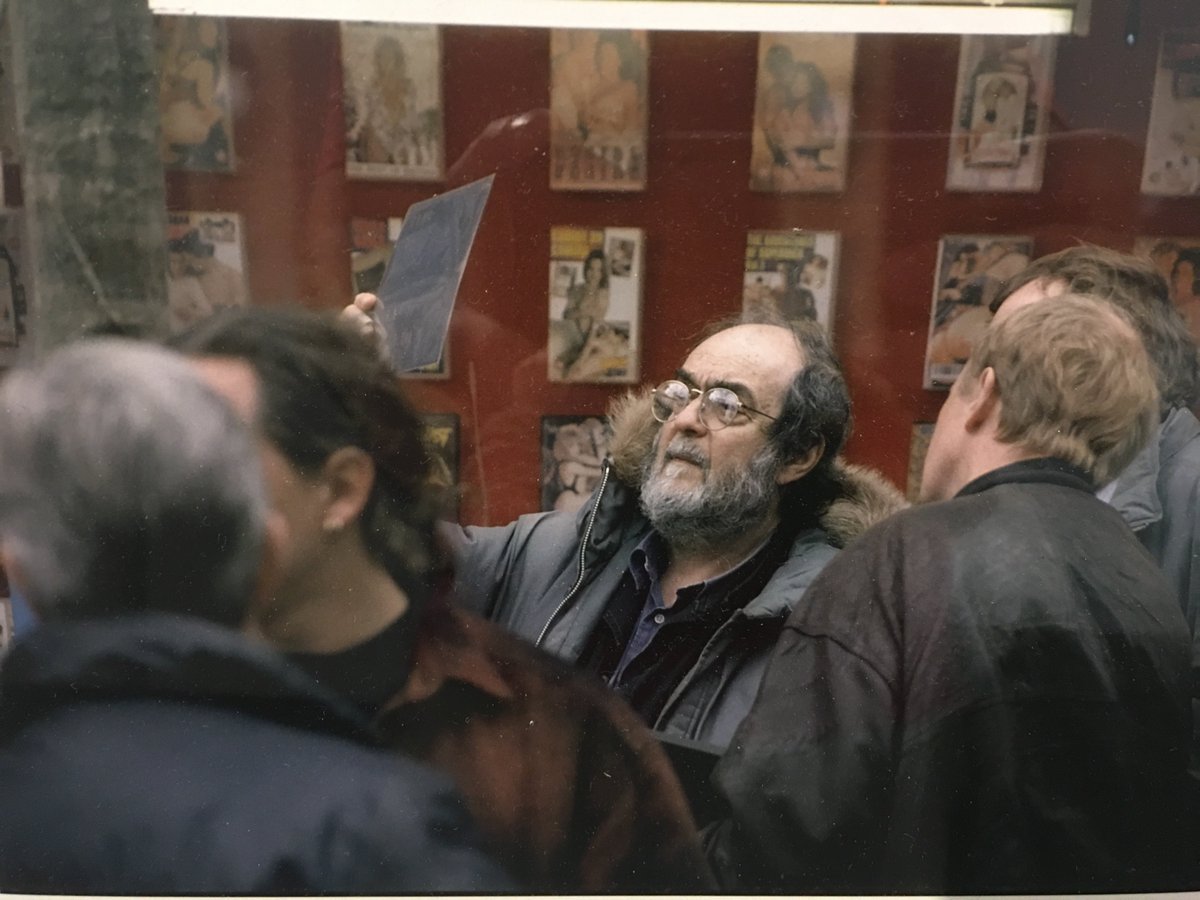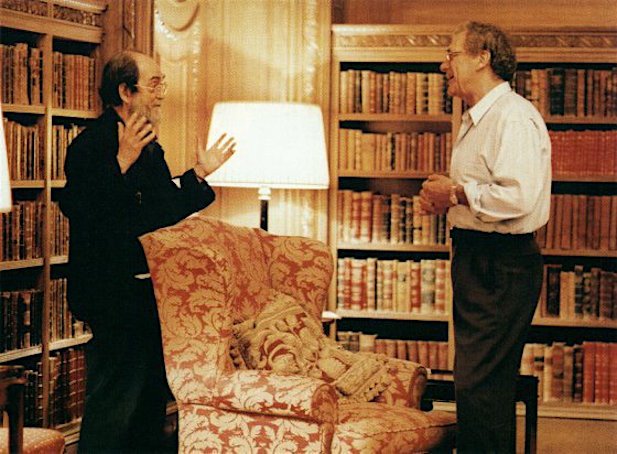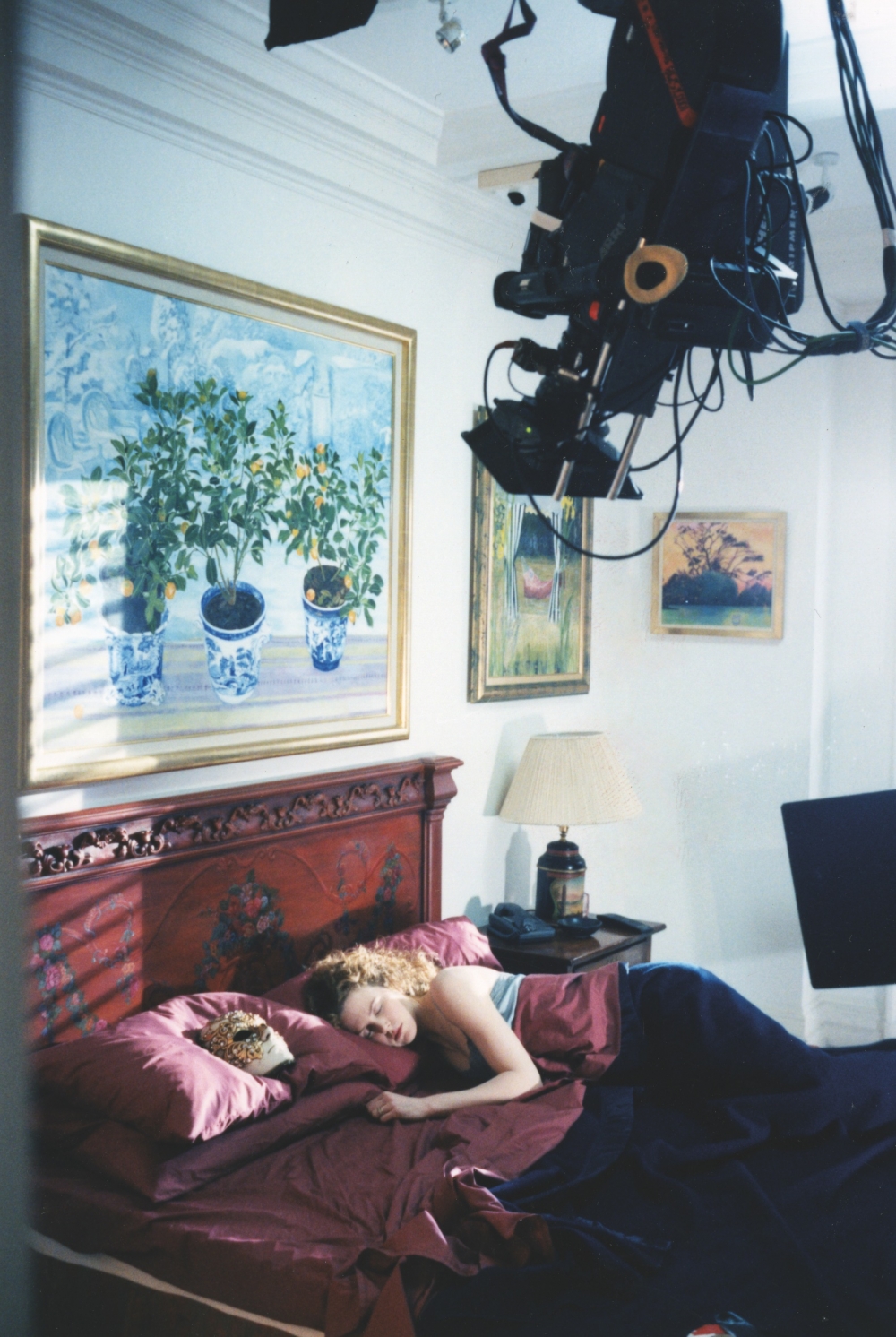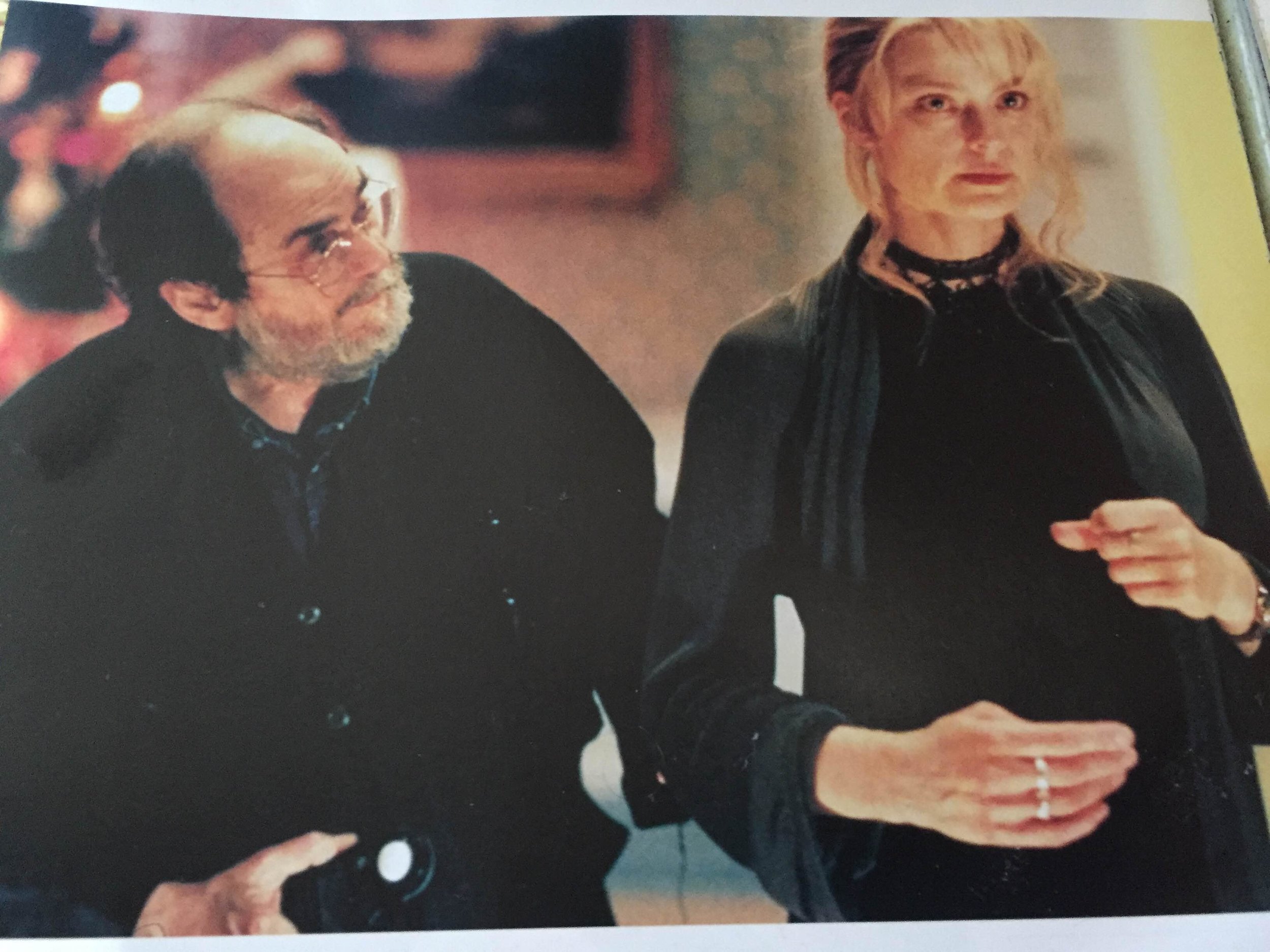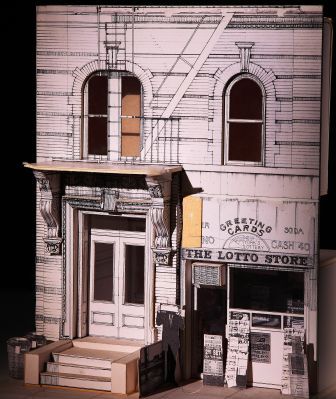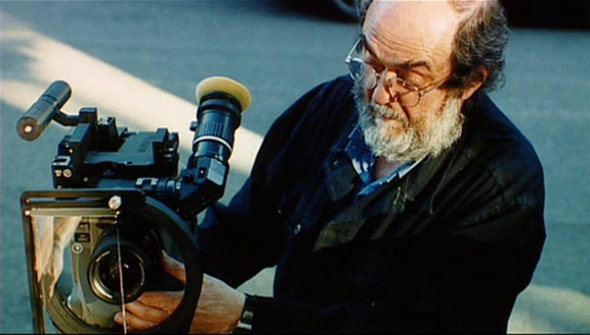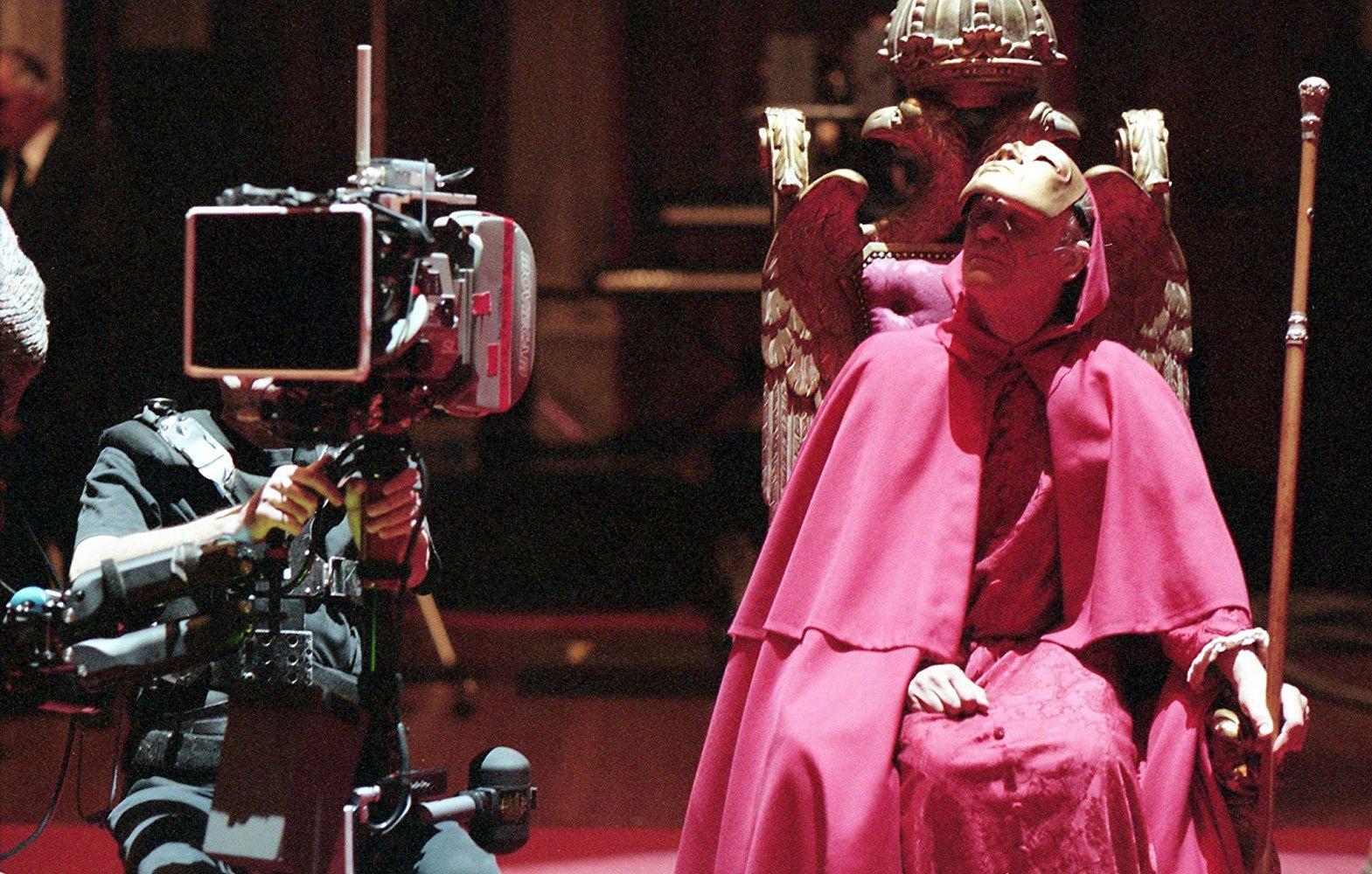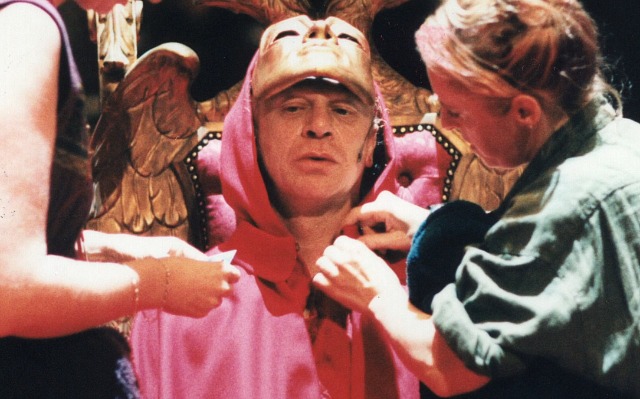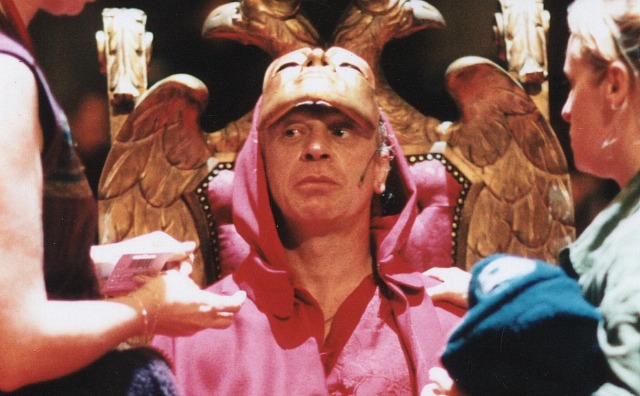THE FIRST CUT (25 min read)
Away from home (shooting season 2 of Humans) in London, while in the midst of writing part two of my short film series Marriage. (In Short), I was doing research online and I stumbled across an article on NoFilmSchool.com by Justin Morrow. The headline read:
"Is 'Eyes Wide Shut' the Movie Stanley Kubrick Wanted Us To See?"
Even though I had watched the film recently as a part of my research, I immediately rewatched it and afterwards, I felt a strange certainty that the answer to Mr. Morrow's question was in fact, NO. I was so compelled by this new found certainty, I spent the next 72 hours recutting the film.
My initial cut was done in a state of excited inspiration, driven mostly by instinct. However, once it was determined to release the cut publicly, I felt a duty to hold my edits up to the scrutiny of what has now become ongoing, obsessive and in-depth research into the creation of Eyes Wide Shut and Stanley Kubrick as a filmmaker. This process not only helped me to refine my cut of the film but also fundamentally changed everything I knew about Eyes Wide Shut and Stanley Kubrick. I’ve attempted to detail it all out here. I hope this provides you a portal for your own rediscovery of Eyes Wide Shut, Stanley Kubrick and at the same time my intentions for Eyes Wide Cut.
WAS KUBRICK FINISHED WITH EYES WIDE SHUT?
This idea has sparked somewhat of a civil war among those on the inner circles of Kubrick’s work and life. Many people will cite family members of Stanley who all state that not only was he finished with the film, save for minor, typical, post-production work but also considered it his greatest contribution.
For example, in a reddit AMA (”Ask Me Anything”) session, Stanley Kubrick's granddaughter, Katharina Kubrick, claimed that he was very proud of the film. Jan Harlan echoes this sentiment and delivers a sort of final statement on the matter:
“Okay, I can answer that totally and completely. The film was first shown on the first of March to Bob Daily, Tom Cruise and Nicolle Kidman in New York. The work print was screened. Nigel Galt, the editor, was there. They absolutely loved the film. They were totally enthusiastic. They called Stanley and told him how much they liked it and all of them were very, very excited. So Stanley was very, very happy and died a week later.
So then, six or seven weeks later when the whole thing calmed down, we had to finish the film. Since we couldn't touch the cut - that was impossible - but we had to do the dubbing, some music recording. It was all planned anyway. We just executed what he had already decided. So we faithfully did our job.
Then came parallel to that, the rating issue. We had to show a copy of the print to the MPAA and they insisted that the orgy scene be changed. How do you change it? Had Stanley lived, he would have because he had to deliver an R-rating that was not to be discussed and of course was out of the question. But had he lived, he would have re-cut it. It's very easy to do. I could have done it. Anybody can do it. You just go back to Tom and in the objectionable copulation scenes are visible, you just go back to Tom walking and looking and then you go back and then that's how you do it.
But we couldn't do that. There would have been an uproar had Warner Bros. or anybody cut Stanley's cut. So we had only one option and that is to add electronically or digitally, more of the black cloaks bit by bit and as little as possible until the MPAA agreed it is now an R-rating. That's the complete answer.”
This statement mirrors similar positions from both Micheal Herr and Tom Cruise that “it was completed except for final looping and mixing.” But with a deeper look into Kubrick’s process throughout his career the answer of ‘whether he would’ve changed the film’ becomes a bit more opaque.
AUDIENCE SCREENINGS & EDITING PAST THE LAST MINUTE
Stanley Kubrick, probably more than any other director, was known for his almost compulsive attention to detail. A veteran chess player and strategist, Kubrick personally devised complex filing systems to solve the problems he encountered during filmmaking, and left archives that were staggering in volume and breadth.
He was also known for making changes to his films at the last minute and even past their initial theatrical release. A prime example of this being Kubrick editing 2001: A Space Odyssey while on the boat ride to New York for the premiere. Even after the release of the film in theaters he kept editing, cutting 19 minutes off, explaining,
"It does take a few runnings to decide finally how long things should be, especially scenes which do not have narrative advancement as their guideline."
2001: A Space Odyssey was released on April 2, 1968, but edits were made "between April 5 and 9, 1969 and detailed instructions were sent to theater owners already showing the film, in order that they might put the trims into effect." 17 of the 19 minutes of footage were recovered in 2010, Here is what the IMDB page says was cut:
Some shots from the “Dawn of Man” sequence and a new scene was inserted where an ape pauses with the bone it is about to use as a tool. The new scene was a low-angle shot of the monolith, done in order to portray and clarify the connection between the man-ape using the tool and the monolith.
Some shots of Frank Poole jogging in the centrifuge.
An entire sequence of several shots in which Dave Bowman searches for the replacement antenna part in storage.
A scene where HAL severs radio communication between the “Discovery” and Poole’s pod before killing him. This scene explains a line that stayed in the film in which Bowman addresses HAL on the subject.
Some shots of Poole’s space walk before he is killed.
A prologue featuring eminent scientists, discussing the possibility of life elsewhere in the universe
This prologue is of key interest simply because had this remained in the film, it would have changed the overall tone, utterly wrecking, in effect, what people love about the movie so much, i.e., it’s mystery. Kubrick chose to hold back any semblance of explanation, and his pragmatic choice not to "bore a restless" audience ended up connecting with the youth who turned the film into a pop culture phenomenon.
In a 1961 interview with Robert Emmett Ginna just after the release of Lolita and 6 years prior to the release of 2001, Kubrick had quite a bit to say on the topic of audience engagement:
And I think this is why great films and great theatre are so rare. Because, in addition to everything else the author has to accomplish, you're always treading that very narrow path of not artificially and falsely stimulating your audience, and, on the other hand, not losing them through boredom or indifference.
I can tell you why I am disappointed in the theatre. I think realistic theatre is a bore. I think that to spend two and a half hours in the theatre, where the method of communication with the audience is through realism and through presenting words and deeds in a completely realistic way is somewhat tiresome. Movies can create realism and cover so much more ground in so much less time.”
When asked why he made the cuts to 2001, Kubrick explained by referencing his modus operandi with previous films including, notably, the ending of Dr. Strangelove all having changed based on audience reaction.
"I always try to look at a completed film as if I had never seen it before. I usually have several weeks to run the film, alone and with audiences. Only in this way can you judge length. I've always done precisely that with my previous films; for example, after a screening of Dr. Strangelove I cut out a final scene in which the Russians and Americans in the War Room engage in a free-for-all fight with custard pies. I decided it was farce and not consistent with the satiric tone of the rest of the film. So there was nothing unusual about the cutting I did on 2001, except for the eleventh-hour way in which I had to do it."
The segment in Dr. Strangelove begins with Soviet Ambassador Alexi de Sadesky, disgruntled over his mistreatment at the hands of General Turgidson, hurling a custard pie at the American officer, but missing and hitting President Muffley instead.
What comes next is a rally cry by Buck, “Gentlemen, our beloved president has been infamously struck down by a pie in the prime of his life! Are we going to let that happen? Massive retaliation!”
Critic James Naremore has described the edited fracas from Dr. Strangelove in his book 'On Kubrick':
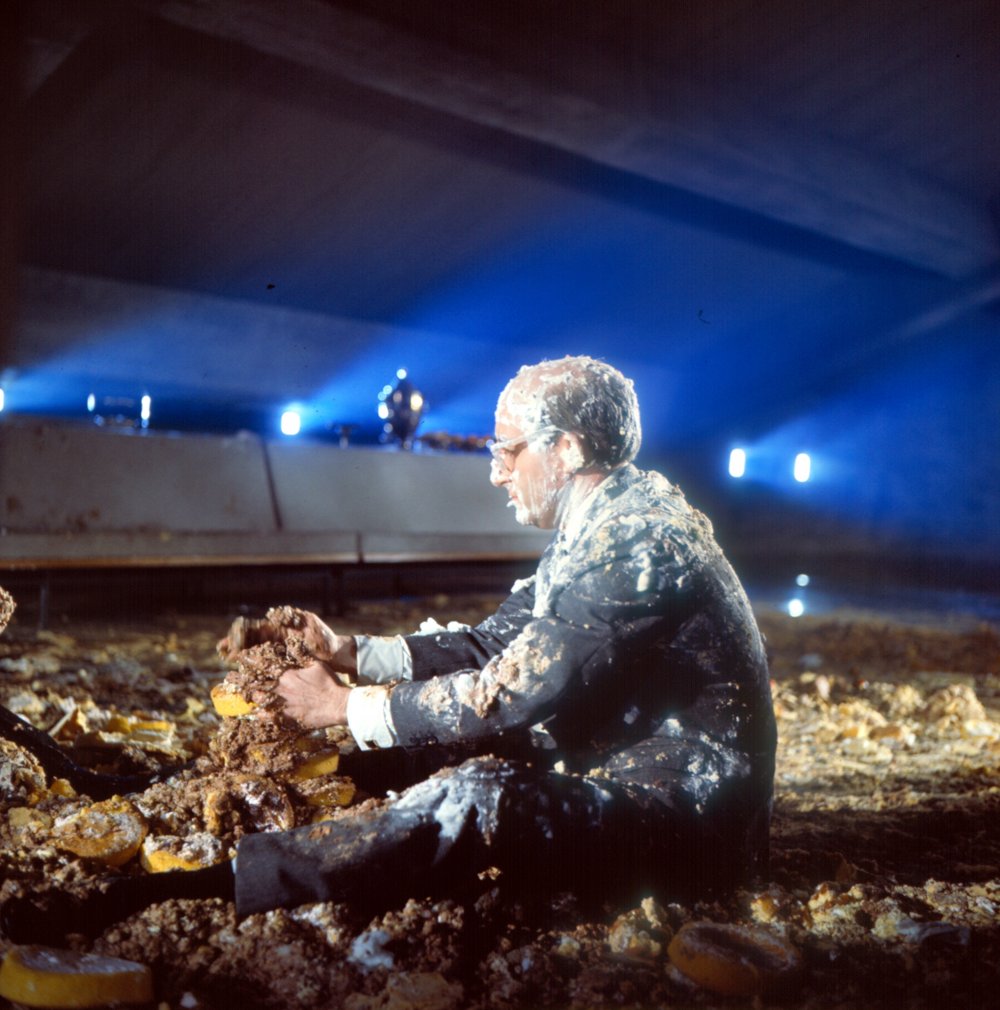
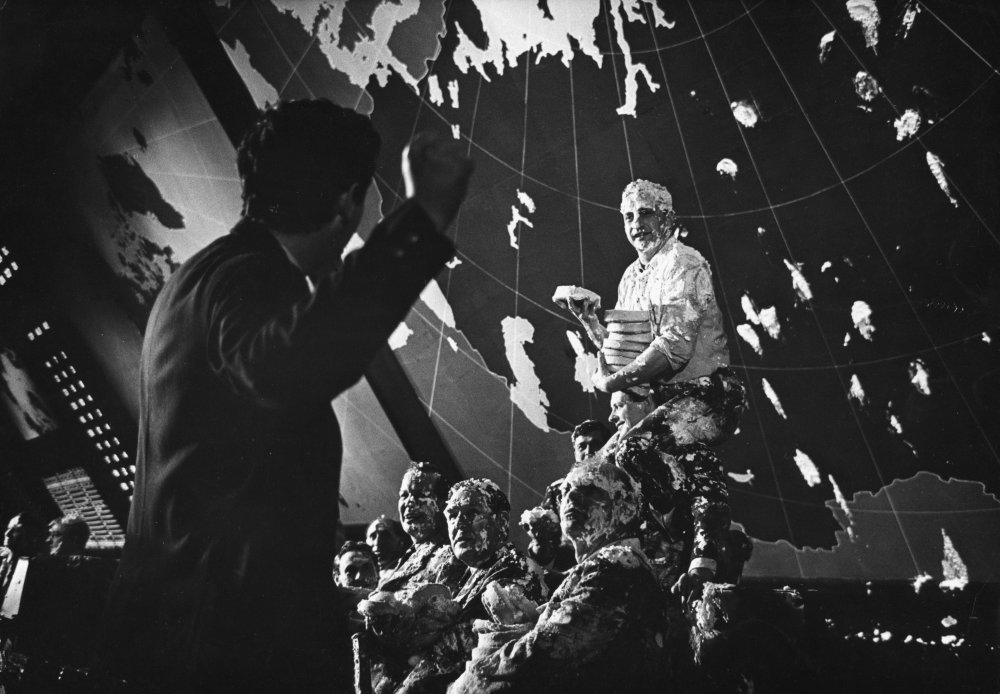

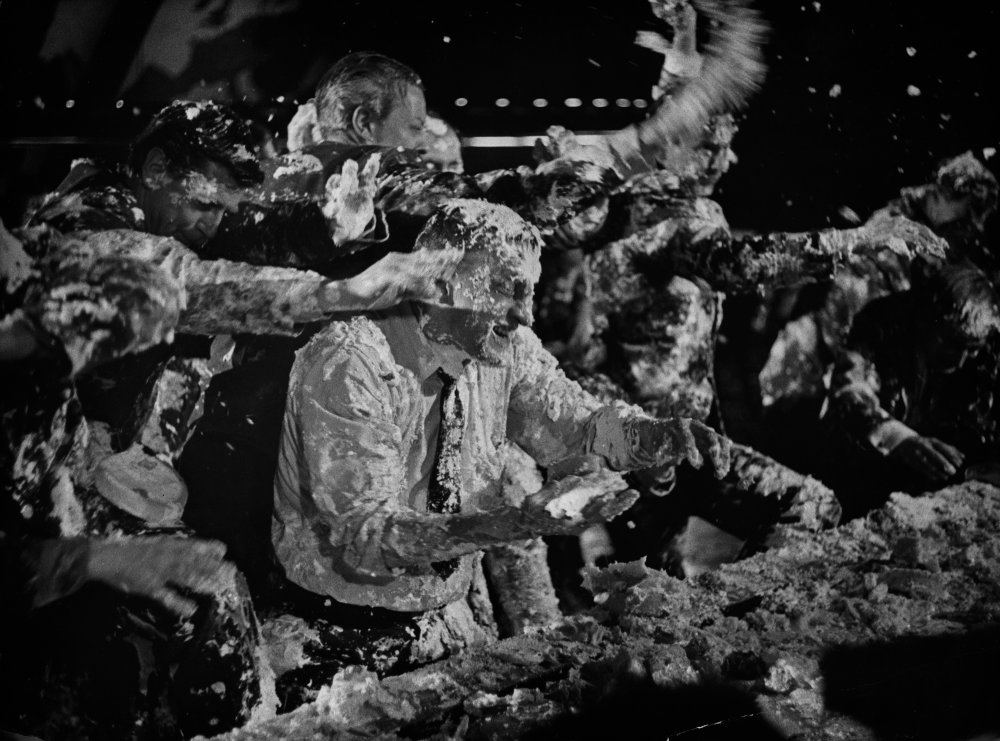
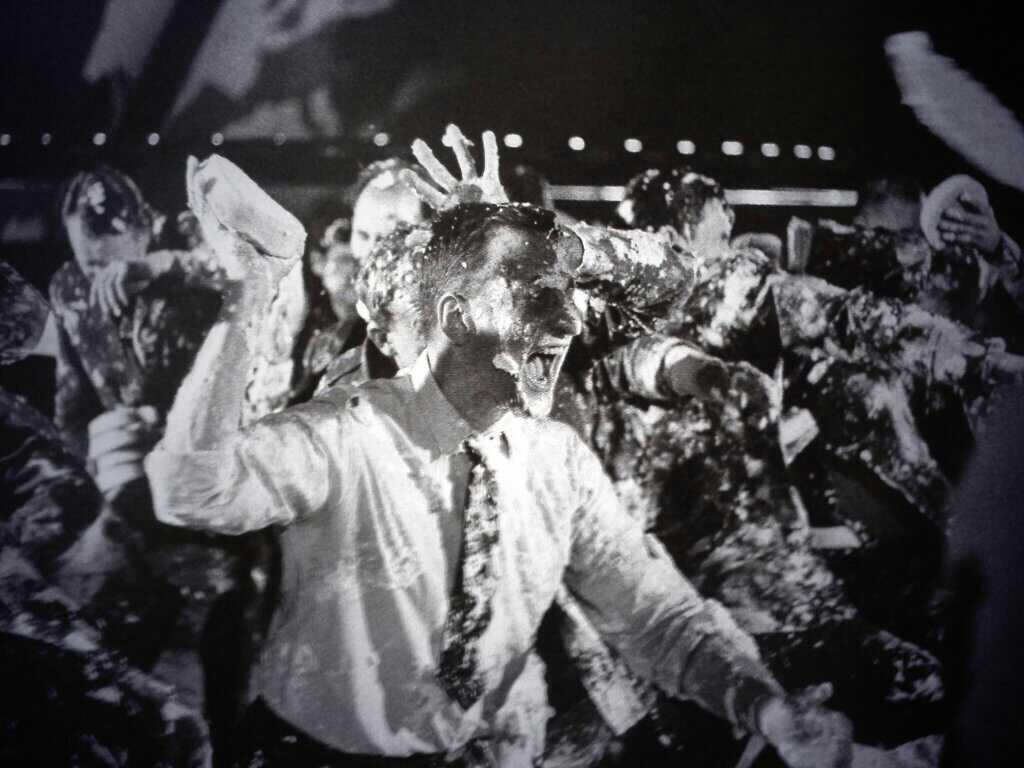
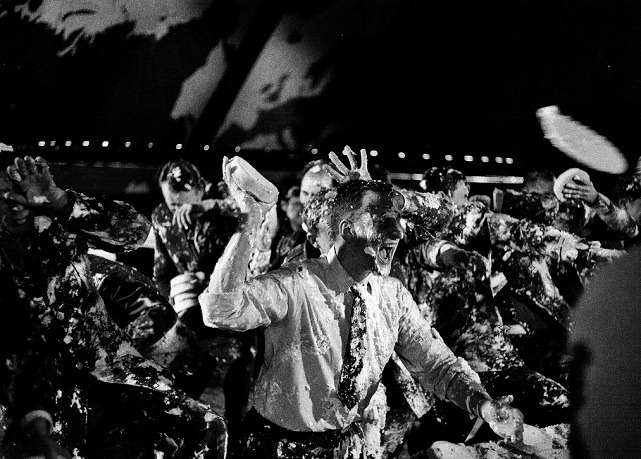
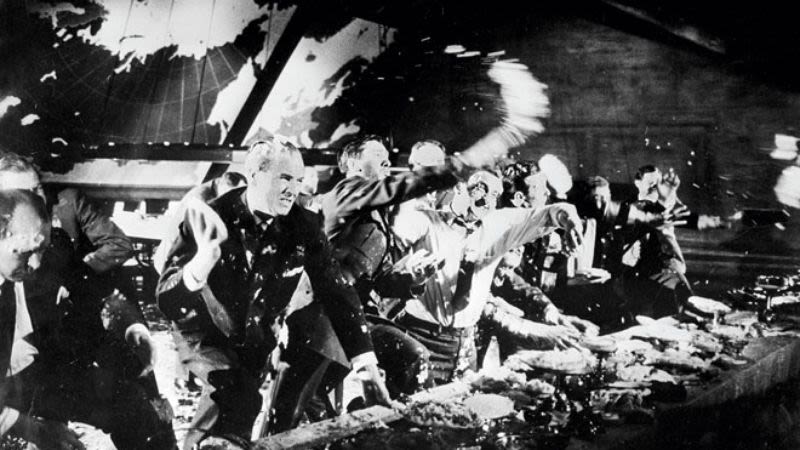
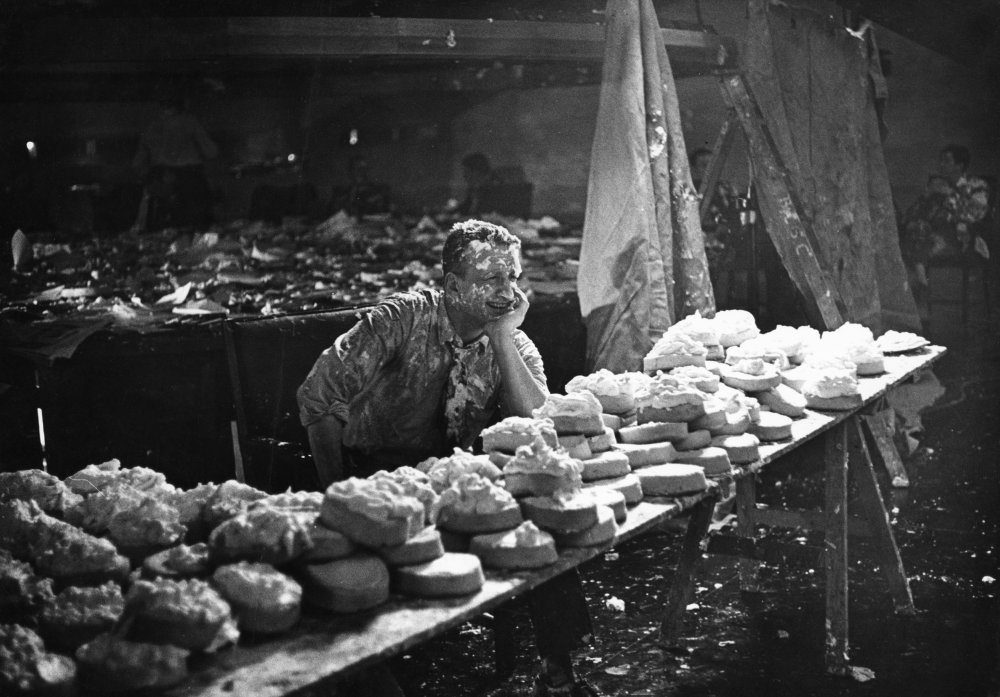

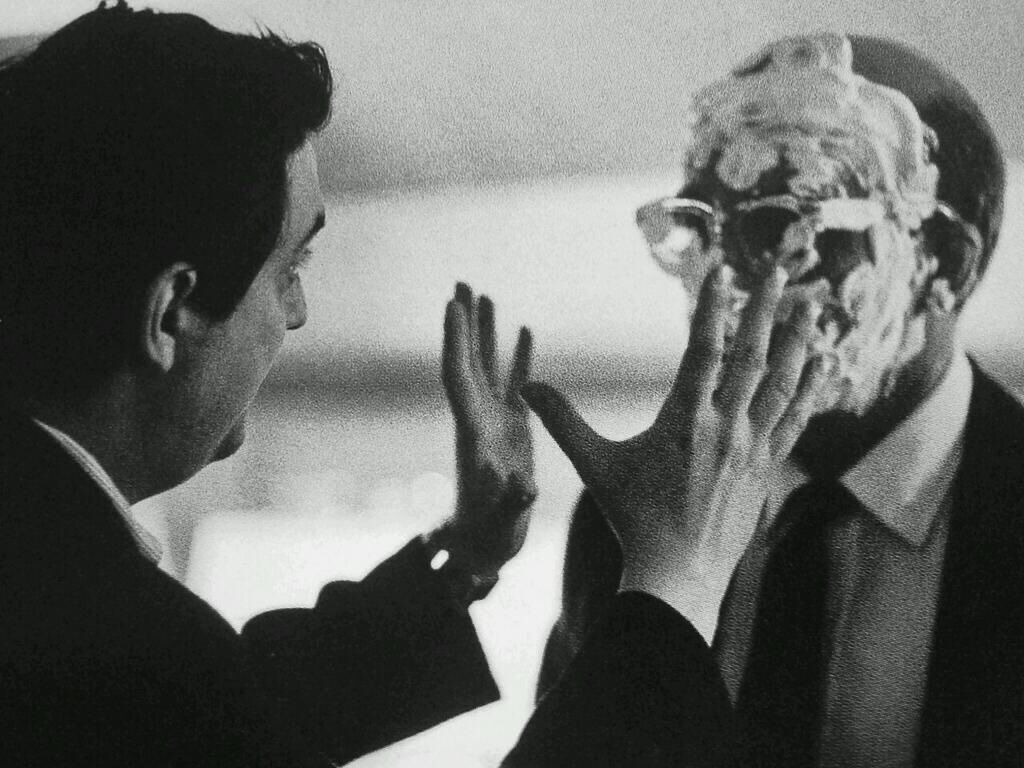

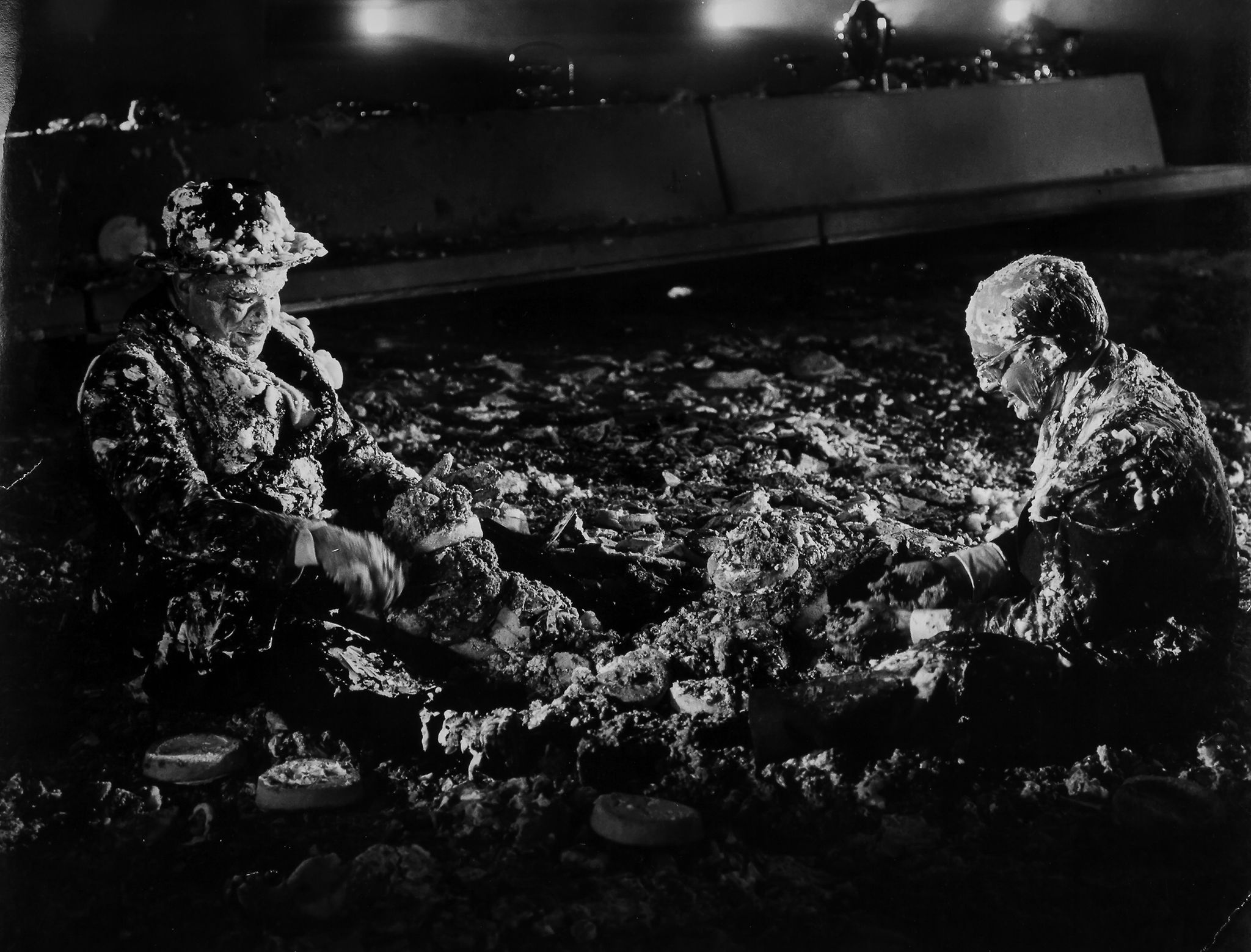
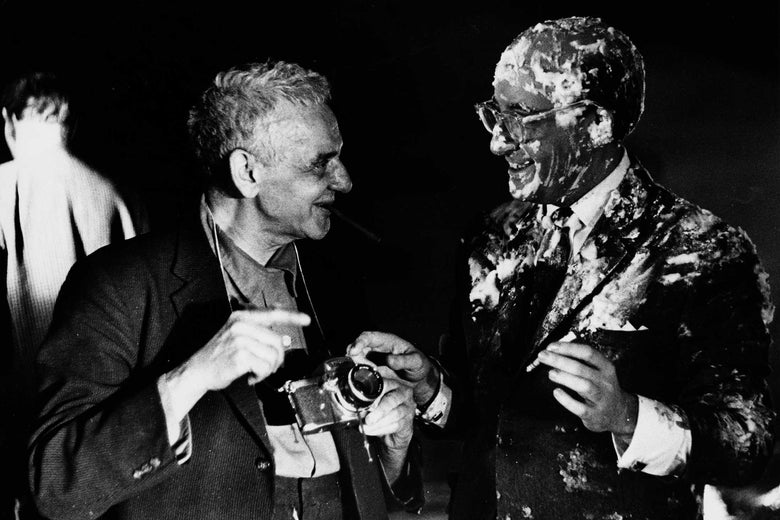
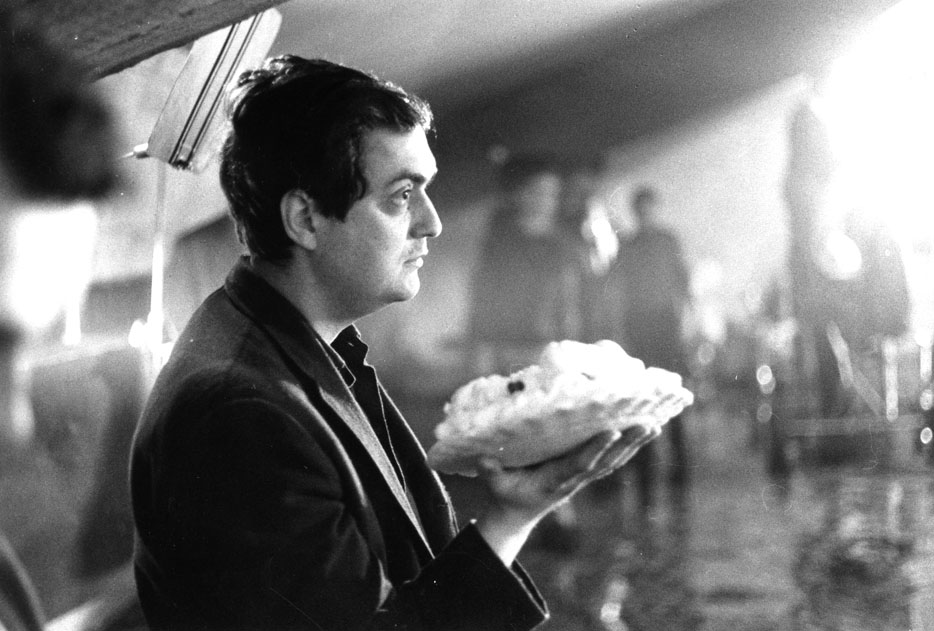
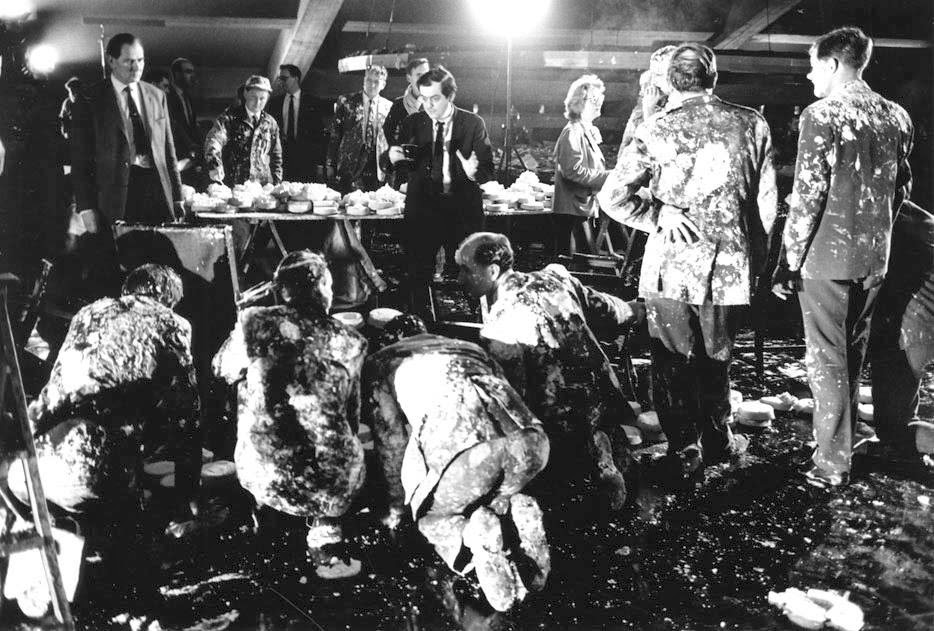
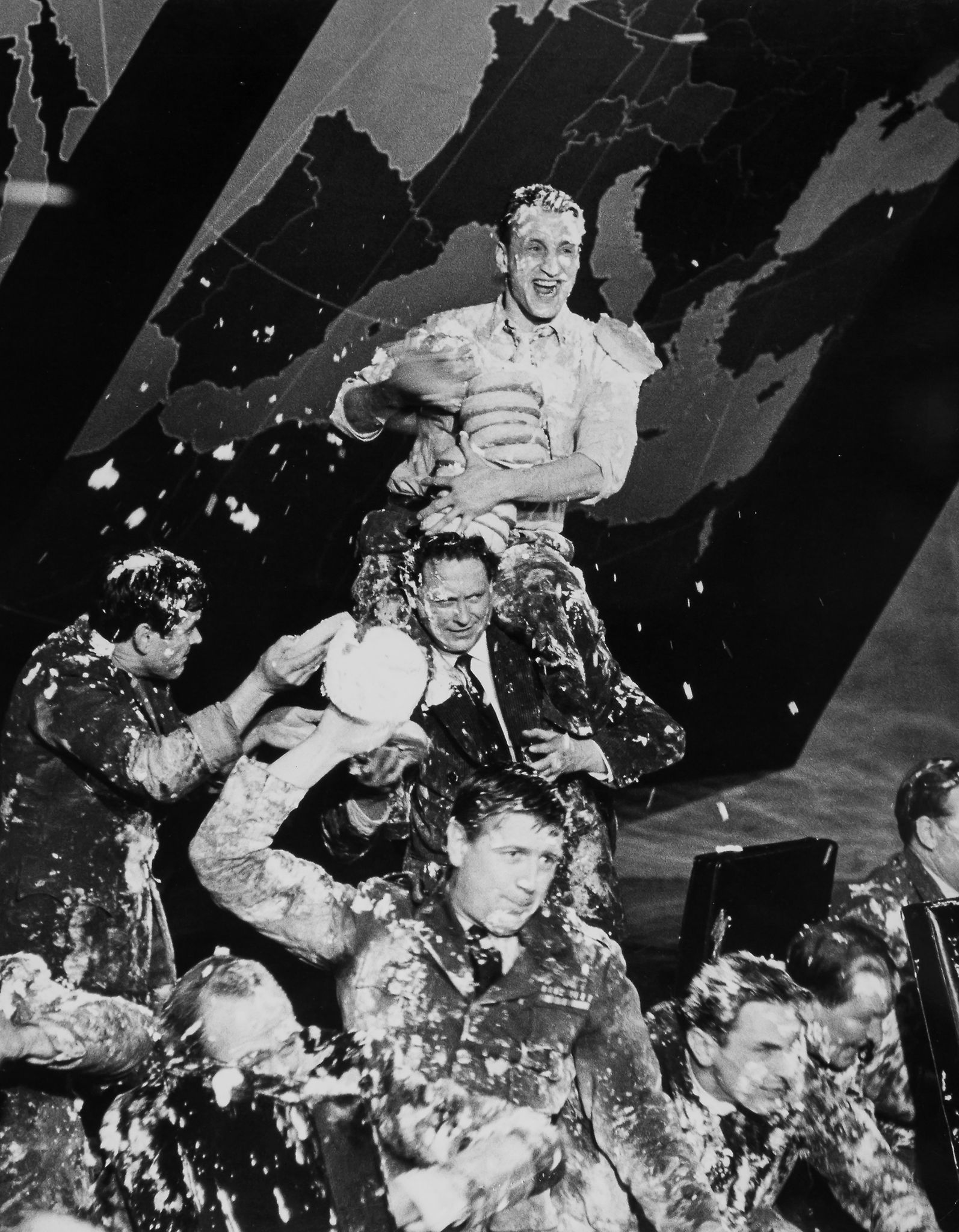
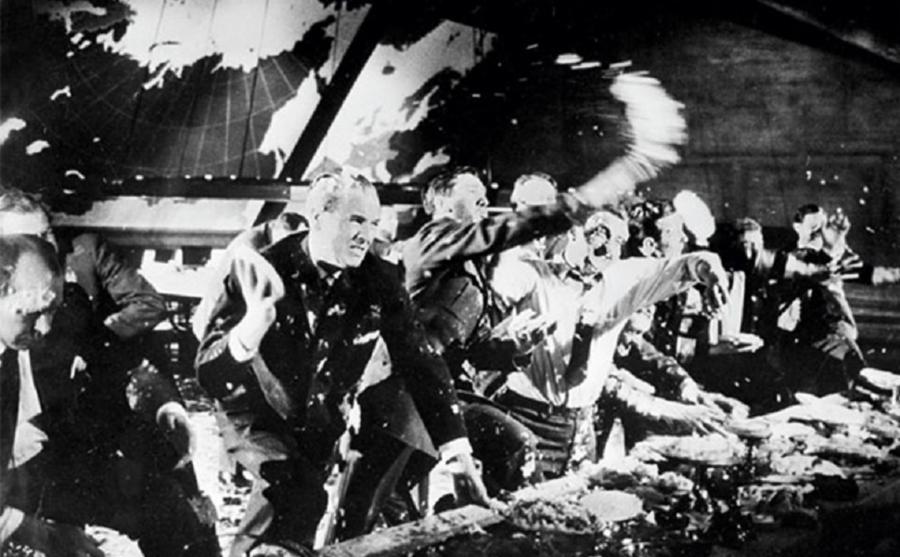

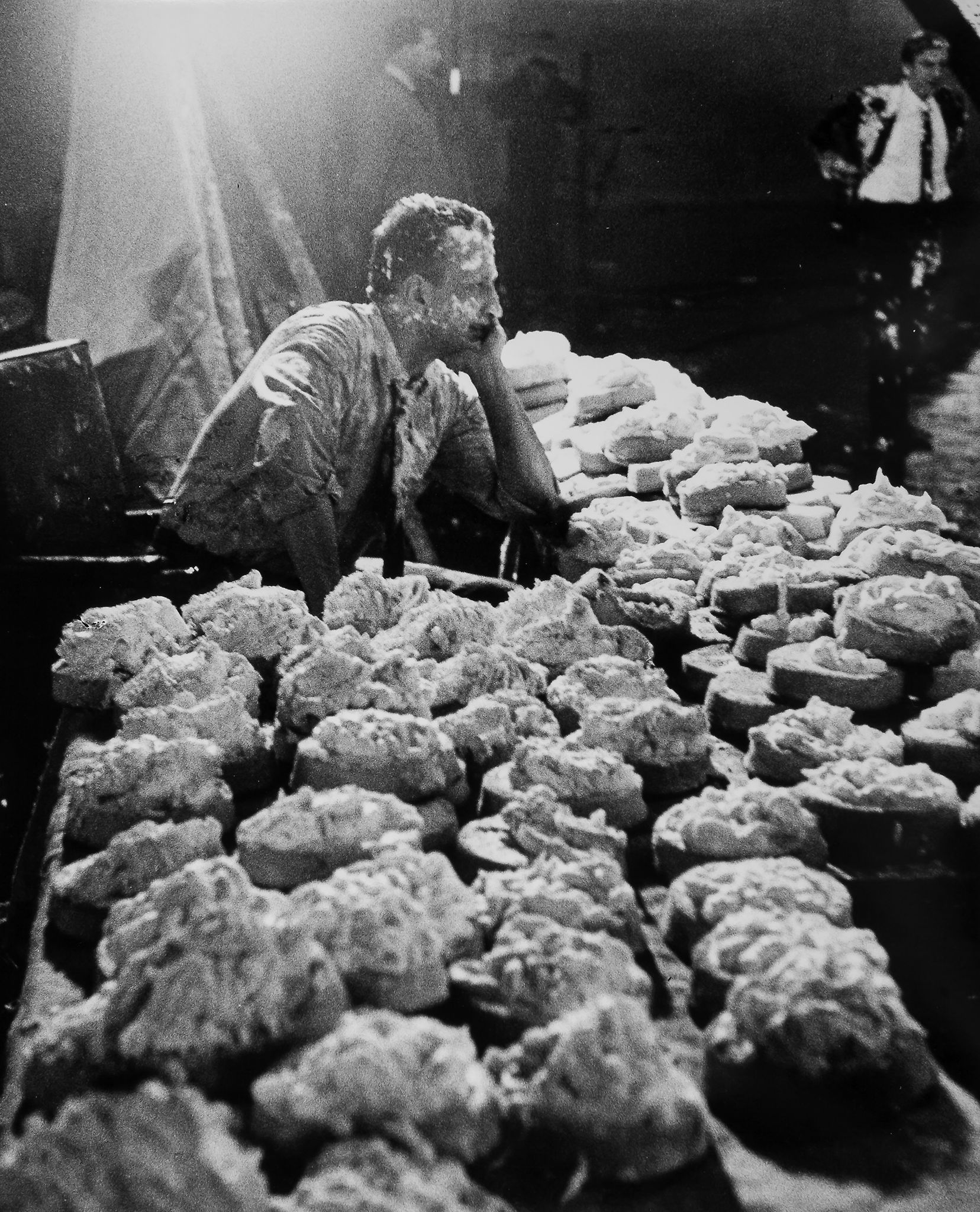
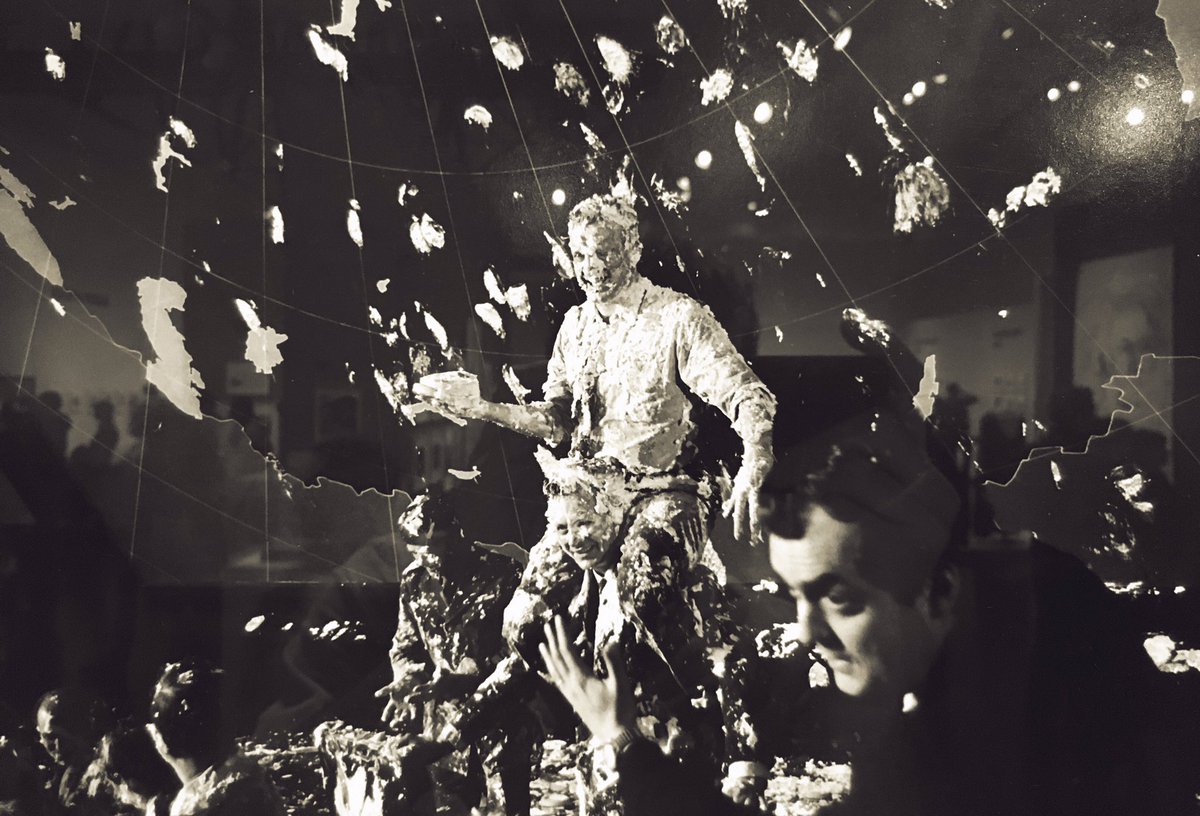
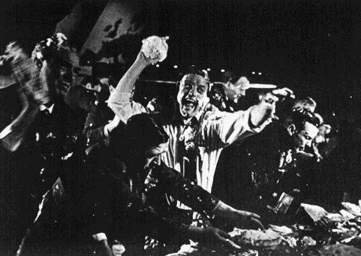

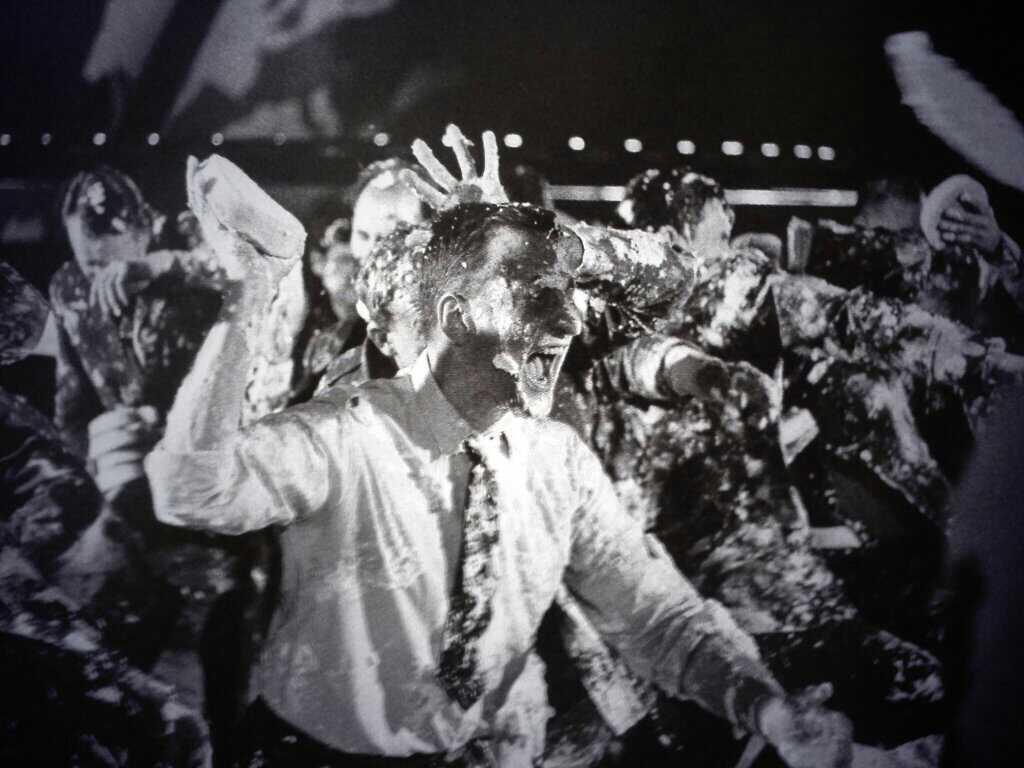

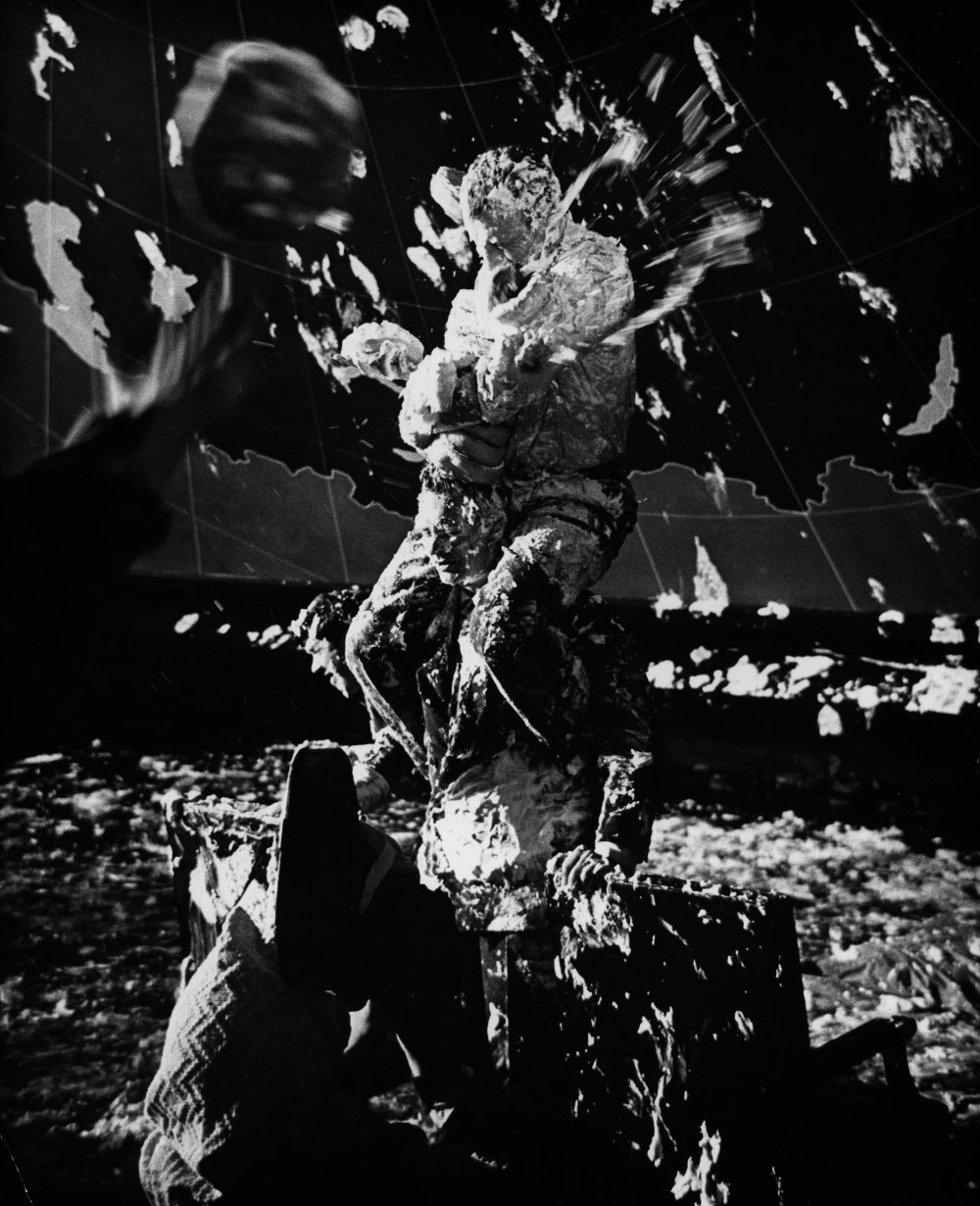


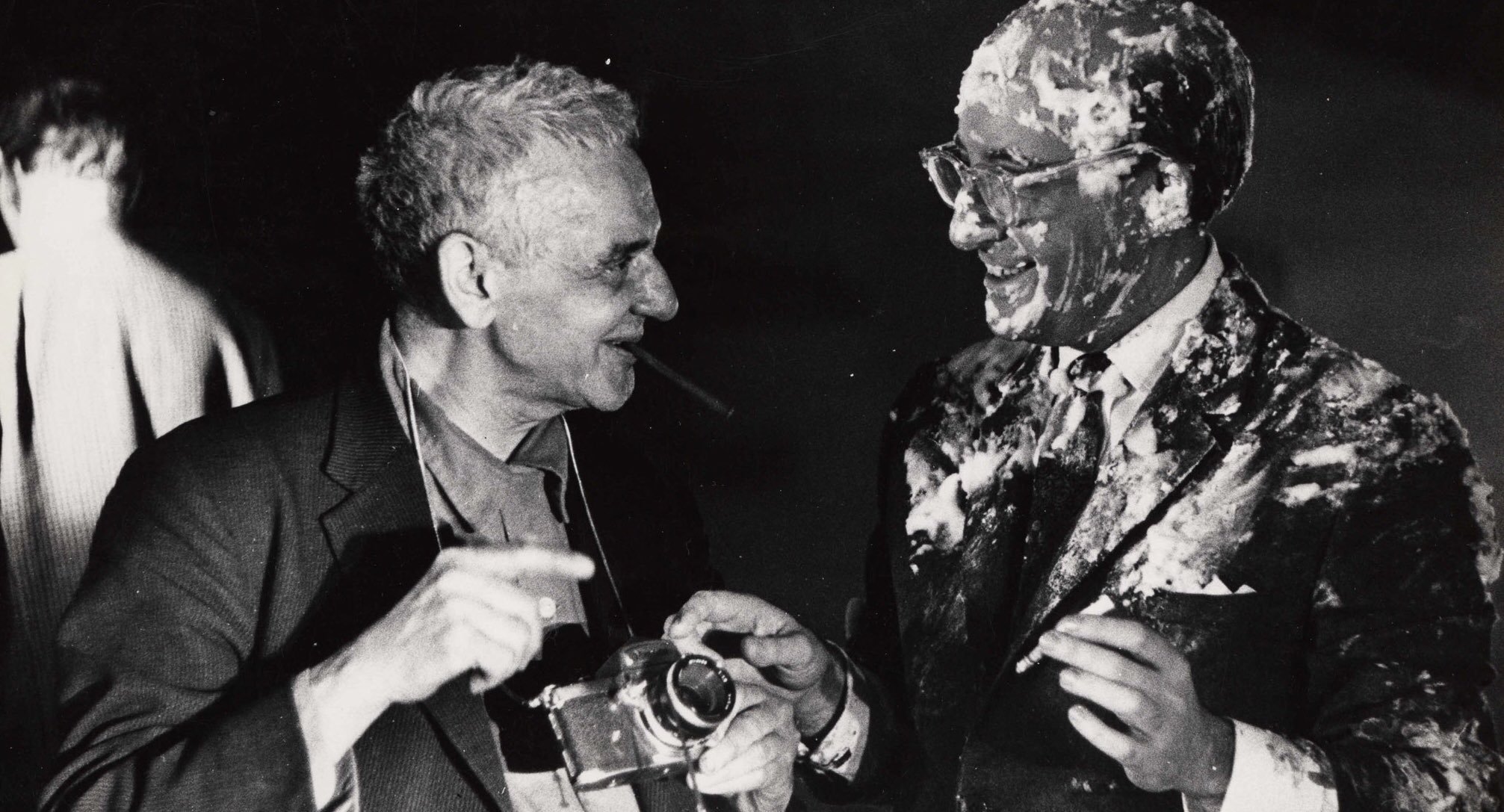
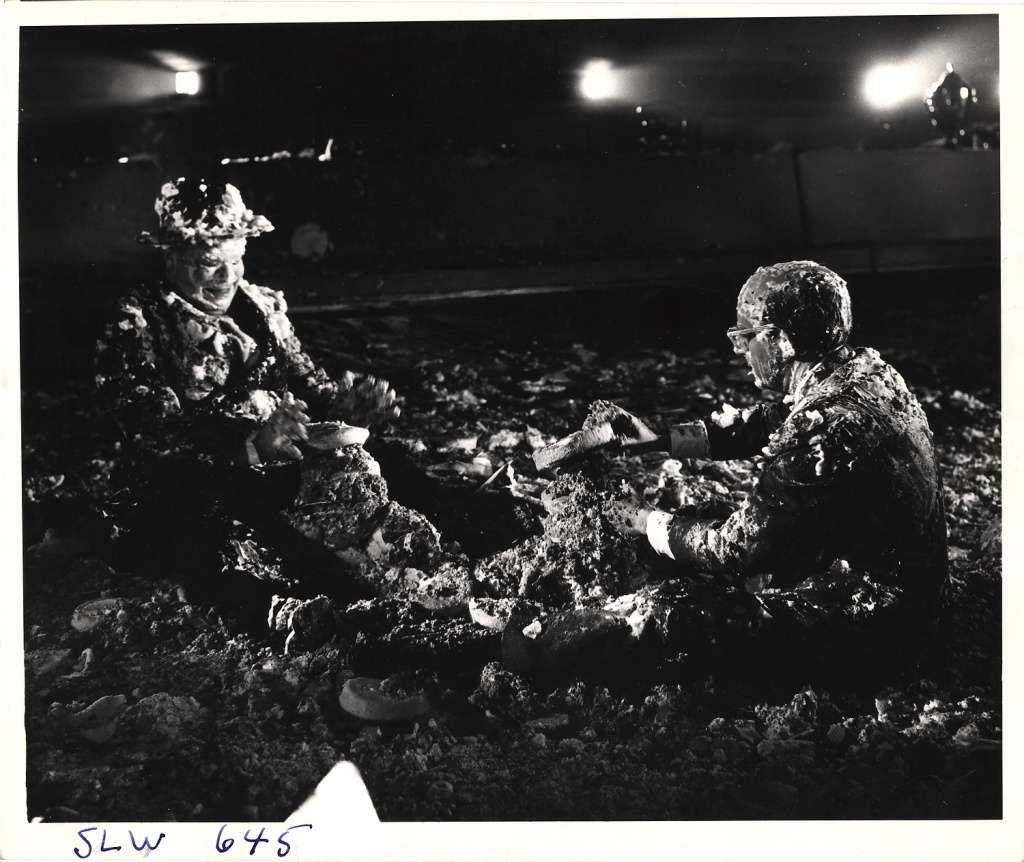
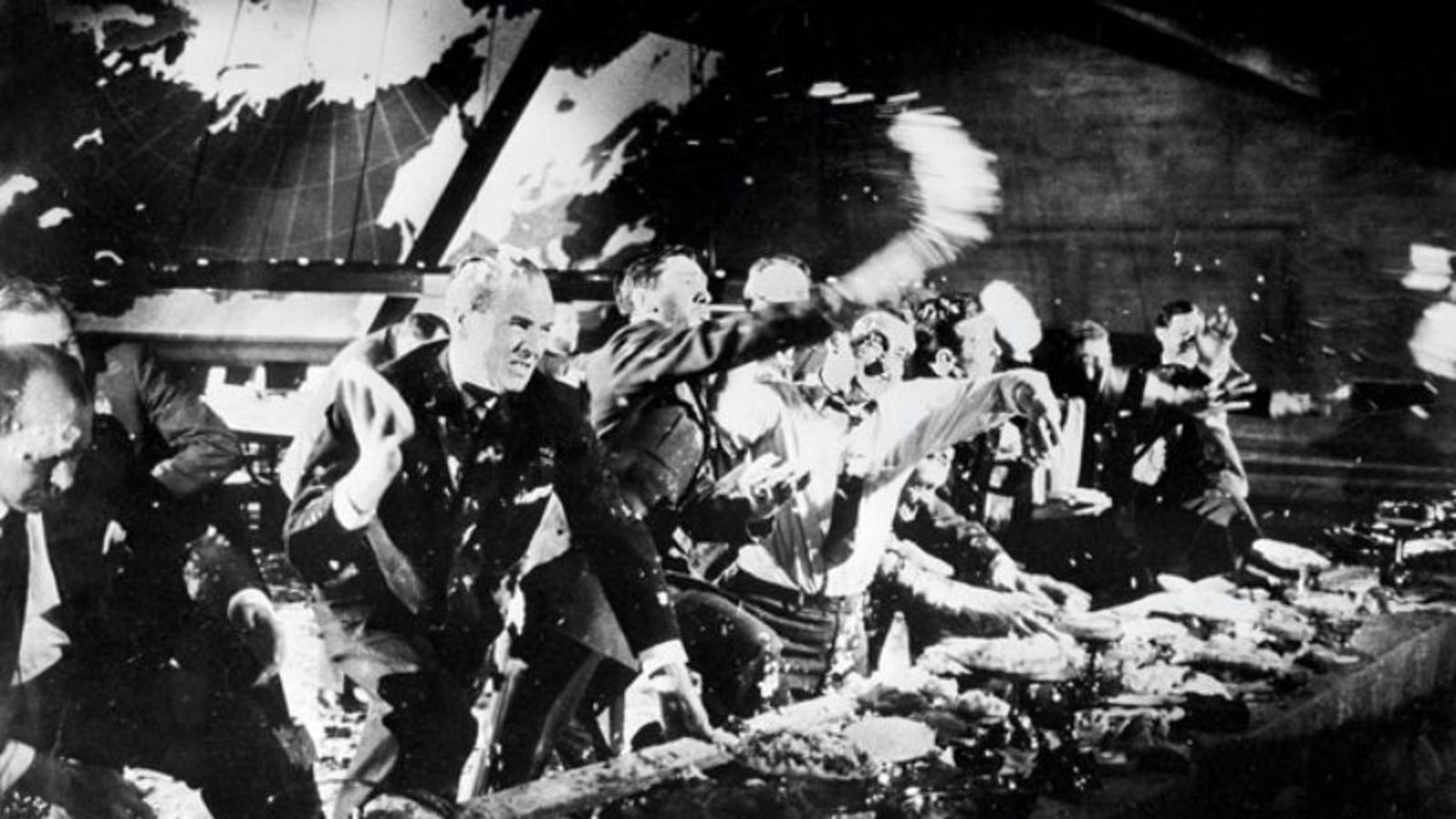


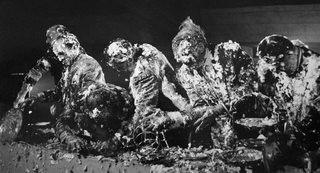



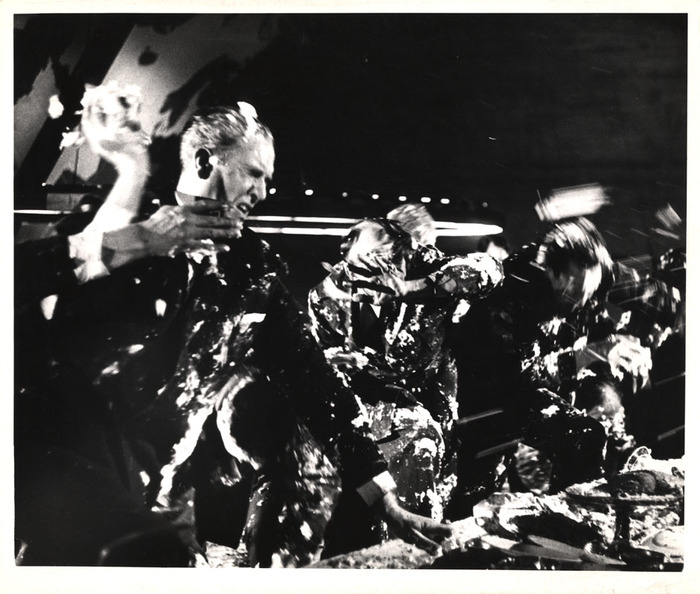
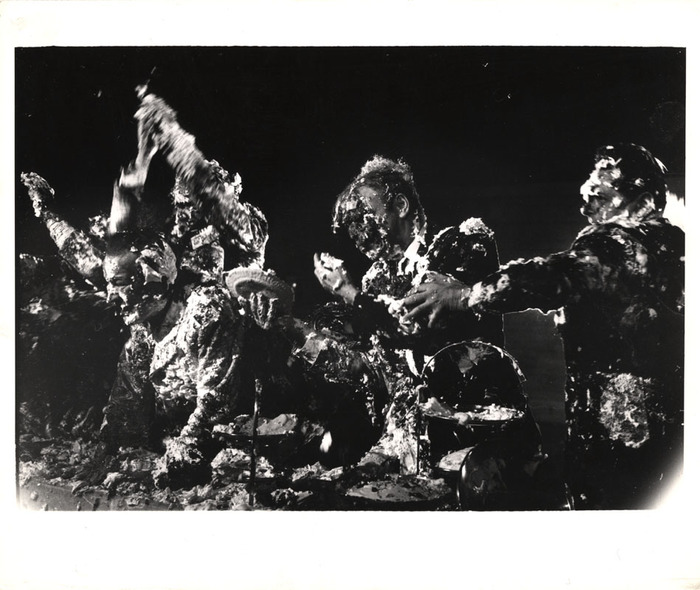
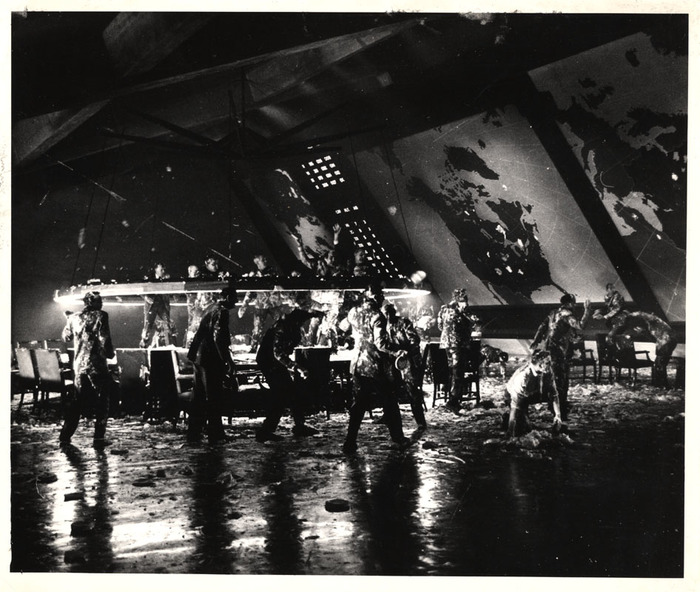
"Characters climb atop tables and swing from the overhead lights; Turgidson sits atop somebody’s shoulders, stuffing pie in his mouth between throws, and the circular conference table becomes a sort of boxing ring filled with white cream. Eventually, Strangelove fires off a gun and shouts ‘Ve must stop zis childish game! Zere is Verk to do!’ The other characters sit around on the floor and play with custard cream like children building sandcastles. ‘I think their minds must have snepped from the strain,’ Strangelove announces."
After test screening Dr. Strangelove on or around the 22 November 1963 – the day of John F. Kennedy’s assassination – Editor Anthony Harvey remembers:
“They were very worried, the studio, about releasing it... They found it might be offensive or something. So Stanley took it out for the moment, and then the film opened and he just didn’t feel like putting anything back. So that remained in the cutting room floor. But it was a brilliant piece of work. Who knows? I certainly thought it was. But I think when you get to a point in working on a film for almost a year, and this sort of sudden pressure comes in as a result of what happened to Kennedy, it’s a sort of clear-cut situation. So that was removed. And it never went back.”
This pattern of adjusting his films at the last minute based on audience reactions didn’t stop with Strangelove or 2001. It's also kind of well-known that The Shining, perhaps the most obsessed-over Kubrick work, has last minute deleted scenes. Two significant scenes were cut after theatrical release.
Co-Screenwriter Diane Johnson:
“There was a big length problem with Warner Bros. The film was too long and people said it had to be shortened. Some [minutes] came off the end and some came off of the beginning — they were expository and not really necessary. The scene that I thought was really necessary was the scrapbook scene. The point of it in [King’s] book and in the script was that the scrapbook was “the poisoned gift” — in Russian structuralist fairy-tale parlance. It’s an element in classic fairy tales — like the poisoned apple. Jack seizes the scrapbook to use in his book, and at that moment he’s now under the power of the hotel. I argued very strenuously [to keep it].”
The second outtake was a two-minute hospital scene that was placed after Jack froze to death and before the final shot of the ballroom photograph. In the scene (read the script pages here), the hotel manager, Ullman (Barry Nelson), visits Wendy and Danny after their ordeal and explains that no supernatural evidence was found to support their claims of what transpired. Just when the audience begins to question everything they’ve seen, Ullman ominously gives Danny the same ball that was rolled to him from an unseen force outside Room 237. It would also have been followed by a card that related how The Overlook overcame the tragedy and still remains open during its regular season.
The hospital scene was included in the film’s preview screening for critics in New York and Los Angeles. Johnson has previously said Kubrick liked the scene because it reassured the audience that Wendy and Danny were okay. But Ullman giving Danny the ball ramped up audience confusion. So Kubrick ordered it removed from prints distributed around the country.
Roger Ebert was one of the few to see the original ending and thought cutting it was a smart move.
"Kubrick was wise to remove that epilogue," Ebert said. "It pulled one rug too many out from under the story."
Of the edit, Kubrick said:
"After several screenings in London the day before the film opened in New York and Los Angeles, when I was able to see for the first time the fantastic pitch of excitement which the audience reached during the climax of the film, I decided the scene was unnecessary. It had not been possible to change all of the New York and Los Angeles prints before opening."
However, what is less well-known is that Kubrick cut an entirely different version of The Shining for it’s international release and he cut far more than one scene. Stanley cut roughly an additional 24 minutes bringing the total difference, combined with the deleted scenes, to approx. 27 minutes. For a detailed, shot-for-shot comparison look here. There is no reliable documentation for why this cut was made but a few sources including IMDB cite Kubrick's cut being a reaction to audience reception:
"After meeting with poor reviews and erratic box office, Kubrick decided to further edit the film for its theatrical release outside the US. He cut approximately 27 minutes of footage, reducing the length to 120 minutes. The 144 minute 'US version' is often erroneously called the Director's Cut when in fact director Kubrick regarded the 120 minute version as the superior cut of the film. When the film was released on home video in the US, Kubrick endorsed the shorter version of the film as the 'official' version."
As you can now derive from these instances and contrary to the legendary reputation that Kubrick was a domineering auteur who needed no input, it is apparent that Kubrick was at the mercy of audiences & studio heads just as much as any other director. Even more-so, he vigilantly cared about their reaction. So much so that it prompted him to change his films even up the last minute and beyond.
Jan Harlan references this when discussing the inter-relational way the ending changed for The Shining:
“The film is complex enough because nothing is explained. That non-explaining is what was bad for the film initially. It was not a huge success. Now everybody thinks it’s the best horror film ever or whatever. But when it came out the audience expected a horror film with a resolution, with an explanation. Who is the baddie? What was going on? And they were disappointed — many of them, anyway. The fact they were left puzzled was exactly what Stanley Kubrick wanted. And when the film [screened for critics] and wasn’t well received, Warners quite rightly suggested, “It’s enough, just take [the hospital scene] out.” So Stanley did it. He’s not stubborn, especially since this is a film mainly to entertain people. But Stanley was actually very sad that he misread the audience, that he trusted the audience to live with puzzles and no answers, and that they didn’t like it."
And as for those changes, what did they achieve? Specifically, in both 2001 and The Shining, the key cuts added a certain mystery to the film- ambiguity as it were. The idea of ambiguity and allowing the audience to interpret his films was a continual pursuit for Kubrick but inherent risk with that pursuit was always the audiences interest level - it was this tight rope that Kubrick walked that made him such an indelible artist who produced some of the most compelling yet challenging films ever pushing the audiences to the brink of their ability to watch films, sometimes even going beyond.
In an interview with Robert Emmett Ginna he spoke of the power of ambiguity:
"It seems to me that works in which the meaning is all too clear are never as powerful and as evocative as works in which the meaning becomes clear and where you enjoy a thrill of discovery. Of course, it's a more dangerous way to write because if the audience fails to discover what you mean, they're left quite disturbed. It's always safer to spell it out, in the last scene, and tell them exactly what you were after - which all too many people seem to do."
SO WHAT CHANGES WOULD STANLEY HAVE MADE?
Now no one can definitively say whether Kubrick would have changed Eyes Wide Shut in the months before it’s release. But there is clear and public evidence that Kubrick had a tendency to work on his films right up to the point of release and more than once, after their initial release. And more often than not the impetus for these changes was audience reactions. This serves as the basis of precedent for our reimagining of Eyes Wide Shut.
Having died months before the theatrical release and never having had the chance to screen Eyes Wide Shut for a true audience, it is my opinion that Kubrick, based on his modus operandi of audience screenings spurring last minute changes, would have most likely changed Eyes Wide Shut before or after it’s theatrical release. Especially when you consider that most of the changes presented here happened over a matter of days. Kubrick had months until the release of Eyes Wide Shut.
Based on the patterns throughout his career, I believe, it is not a far stretch to imagine that he would’ve have cut Eyes Wide Shut in order keep the audience’s interest at peak level, while at the same time, imbue the film with as much ambiguity as possible.
SO WHAT WAS THE AUDIENCE REACTION TO EYES WIDE SHUT?
In typical Kubrick fashion the initial reaction to Eyes Wide Shut was, well, less than enthused. Now - any true Kubrick fan knows that this is not unusual. In fact most of Kubrick’s films, 2001 included, were met with critical and public derision only later to be lauded as seminal masterpieces. So question is: are the criticisms of Eyes Wide Shut valid or just another knee jerk misunderstanding like his previous films?
Let’s look first to the critical reviews in 1999. A quick perusal of quips from it’s 74% rating on Rotten Tomatoes and a pattern starts emerge:
“it is so deliberately paced and so strangely devoid of emotional stakes…”
“Morbidly paced foolishness.”
"It's empty of ideas, which is fine, but it's also empty of heat.”
“Long and dull”
“the idea of sitting through it again anytime soon may be about as alluring as eating a hairball”
But maybe those critical comments are simply anachronistic in the Kubrick sense, just like his previous films criticism?
It is important to mention that Eyes Wide Shut is currently experiencing a resurgence that looks to be reaching a peak; at the writing of this, two major Eyes Wide Shut projects are in later stages 1) A book comprising a comprehensive and exhaustive research on the history of the film and its execution 2) A feature documentary nearly 10 years in the making solely on Eyes Wide Shut from the filmmakers that brought us "Filmworker". Not to mention, a re-release of the film on Netflix and countless bloggers and film enthusiasts urging audiences to reconsider the film as not only a masterpiece but looked-over perfection.
In spite of this resurgence and newfound appreciation for the film seen in more recent audience reviews, that one throughline of criticism remains to this day.
To me, it is clear that had Kubrick been alive and been able to screen the film for audiences before release - he would have addressed this prominent and consistent criticism.
But this also reveals that Kubrick, forever associated with the tyrannical auteur image, was just as vulnerable to an audiences reaction as any other filmmaker. Clearly in each of these instances Kubrick made the changes with the reactions of the audience being the primary motivation.
Here from an interview conducted in 1961 just after the release of Lolita:
"There were many possibilities, in some scenes, of adjustment & ways to play it, but, finally, one had to choose the one that was the most interesting because the audience will not respond with a full emotional response if they're sitting there bored & restless. And there's always this fine line between over-stimulating an audience and keeping them artificially excited & losing them."
THE MYSTERY ENDURES
So maybe you aren't convinced? But don’t take my word for it. Others have postulated at the notion that Eyes Wide Shut was left unfinished. In a 2012 interview with Hollywood Reporter Nicole Kidman stated,
“Stanley said the film was finished -- but if he had more time, who knows how it would have morphed.”
According to filmmaker David Lynch:
“I really love Eyes Wide Shut. I just wonder if Stanley Kubrick really did finish it the way he wanted to before he died.”
Christopher Nolan on the one question he would ask Stanley:
“What I’d like to know is how he would’ve finished ‘Eyes Wide Shut.' He died before the scoring sessions were completed,” Nolan explains. “Even though I think the studio appropriately put out the film as his version of the film, knowing where [scoring] happens in my own process, it’s a little bit early.”
WOULD KUBRICK HAVE BEEN OK WITH YOU RECUTTING HIS FILM?
Clearly I see this from a different angle. To see that angle one needs to consider Kubrick’s obsession with television commercials.
Sydney Pollack, a prominent director who plays Ziegler in film and friend of Stanley's, said Kubrick had lately become fascinated with several Nescafe coffee commercials on English television, admiring their economy of style and even tinkering with their editing.
“I remember once we got into a discussion over there being too many words in English dialogue. So he started taping NesCafe commercials. At the time in France there were these NesCafe commercials that were basically mini-dramas. So Stanley would send me these little NesCafe commercials … and he would edit them! Then he would say, “Now, there were 93 words in this and I took 17 of them out.” He’d do stuff like this.“ https://www.gwhatchet.com/2004/04/08/recalling-kubrick/
IS EYES WIDE CUT WHAT STANLEY WOULD’VE DONE?
Clearly, it is impossible to know what edits Kubrick would’ve made (if any) if he were to have lived past Eyes Wide Shut’s theatrical run. However, what I have set out to do is not try to make the edits Kubrick would’ve made. In order for this to be a worthwhile exercise at all, since I am not Stanley Kubrick, I felt it necessary to change the film enough for it shed light on an unappreciated aspect of the film while trying to adhere to the principles and passions that drove Kubrick himself.
To put it simply I didn’t think anything needed to be CUT out, rather, I wanted something specific to be DRAWN out.
To bring something to the forefront that was previously hidden in plain sight.
To me, that something was Tom Cruise’s performance.
Now, what has always stood out to critics and fanfare alike, was Nicole Kidman’s performance and rightly so, it’s nothing short of world class. And in the same breathe those same people would either downplay Cruise’s performance or outright insult it (call it wooden, detached, fumbling etc). Which to be honest, as a professional actor, always struck me as odd. When I watch the film, even with a critical eye on Cruise’s acting, I am hard pressed to find a flaw.
After many viewings and based my own personal experience acting on camera for 16 years I have come to the conclusion that what is “wrong” with Cruise’s performance is not his acting at all but actually the way the story is told.
What I mean, is that the driving force of the story is clearly Bill, or as stated so eloquently by critic as “A delicious, deadpan farce about the fragile masculine ego.” Yet the narrative seems to be wont to deviate away from Bill’s fragile masculine ego, turning our attention instead to other characters and effectively stretching the journey so thin nearly severing our already slight connection to Bill’s state of mind.
This is not to say that Kubrick made a mistake in his storytelling but it might indicate that on the spectrum of accuracy/boredom to inaccurate/'falsely stimulating' maybe Eyes Wide Shut falls a little heavy on one side? If not but simply for the fact that Kubrick did not get a chance to gauge his audience and tweak his story? Or maybe,knowing his desire to push the boundaries of story form, that is exactly what Kubrick intended? But how would one compare unless you had access to a comparison?
This could simply be attributed to Kubrick’s gospel like devotion to the source material. In the book many of these “other characters” draw out of Bill (or Fridolin) his crisis of identity that is perfectly articulated through his internal narrative - which Kubrick flirted with including as voice over (ala Barry Lyndon) throughout the film that was drawn straight from the novella (you can read the original script here).
Bill’s VO after his encounter with the “rowdy college boys”:
"Had he become a coward, he asked himself, and noticed his knees were shaking a little bit. Ridiculous! Why should he get involved in a street fight with some drunken college student who had five friends with him."
BILL keeps walking without looking back.
"He, a man of thirty-five, a practicing physician, a married man and father of a child. He might wind up in the hospital or worse and tomorrow be in the same position as the man he just left.. Then he thought about his profession? There were dangers lurking there, too, everywhere and at all times except that one usually forgets about them. Surely, it had been nothing but common sense to avoid a ridiculous fight with the student... but if he ever meet the Naval officer with whom Alice...
JEALOUS FANTASY IMAGE - ALICE AND NAVAL OFFICER
"But what insanity! After all, nothing happened... What was he thinking about?... But then, wasn't it really just as bad as if she had actually fucked him- she might just as well have. Wasn't it even worse, in a way. What a joy it would be to teach him a lesson."
Here we see that a seemingly menial scene where Bill gets harassed by some college kids has a much deeper meaning and relation to the overall theme and thrust of the film - but without this voice over, this tectonic inner life goes undetected.
With that in mind, my aim was simply to cut away anything that caused the audience to forget what is driving this story: BILL . Thereby allowing us to track with his psychologically driven motivations, stay with the tension inside him emotionally and lose anything that did not translate simply to film from the novella. In a sense, this allows for us to get “caught up” with him in his plight for the fantastical sexual tryst to satisfy his shrinking manhood.
FIDELIO
Since, tragically, Kubrick died two days before the release of Eyes Wide Shut and therefore unable to perform any last minute edits, I personally believe the current version of the film is not the one Kubrick would’ve been satisfied with. In a 2012 interview with Hollywood Reporter Nicole Kidman postulated,
“People have asked me if Stanley ever told us what Eyes Wide Shut was about -- and the answer is no. He didn't believe in interpretation. He always said, 'Never say no to an idea -- you never know how that idea will ignite another idea.' He also said: 'Never put me on a pedestal. When someone's on a pedestal, there's no creativity.' That's how I approach every creative person now; it does not help to glorify them.”
So, based on this assumption and in the spirit of "never say no to an idea", I decided to make that last-minute edit to Eyes Wide Shut not only as an homage to my favorite filmmaker but also as a personal challenge to myself as an editor and storyteller. Furthermore, this serves to satisfy in a sense the nagging mystery: What if Kubrick were to edit Eyes Wide Shut? What changes would even be possible?
Overall, what I have attempted to do, is to give the narrative a more concise driving tension without losing any of the deliberate dream-like pace, hoping instead to carve the film into a sort of fugue, fever-dream. Kubrick himself has stated that Eyes Wide Shut was his best film and though I do believe it was left unfinished, as it stands now, I still consider it a masterpiece.
In the end I made 18 cuts, totaling 40 minutes of footage. The original runtime, 2hrs 39min, now sits at roughly two hours.
So without further ado, please enjoy my experiment with an open mind and your Eyes Wide | Cut.
-Marshall


